「田・山・湾の復活」
「田山湾の復活」 “Resurrection of Rice Field, Mountain, and Bay”
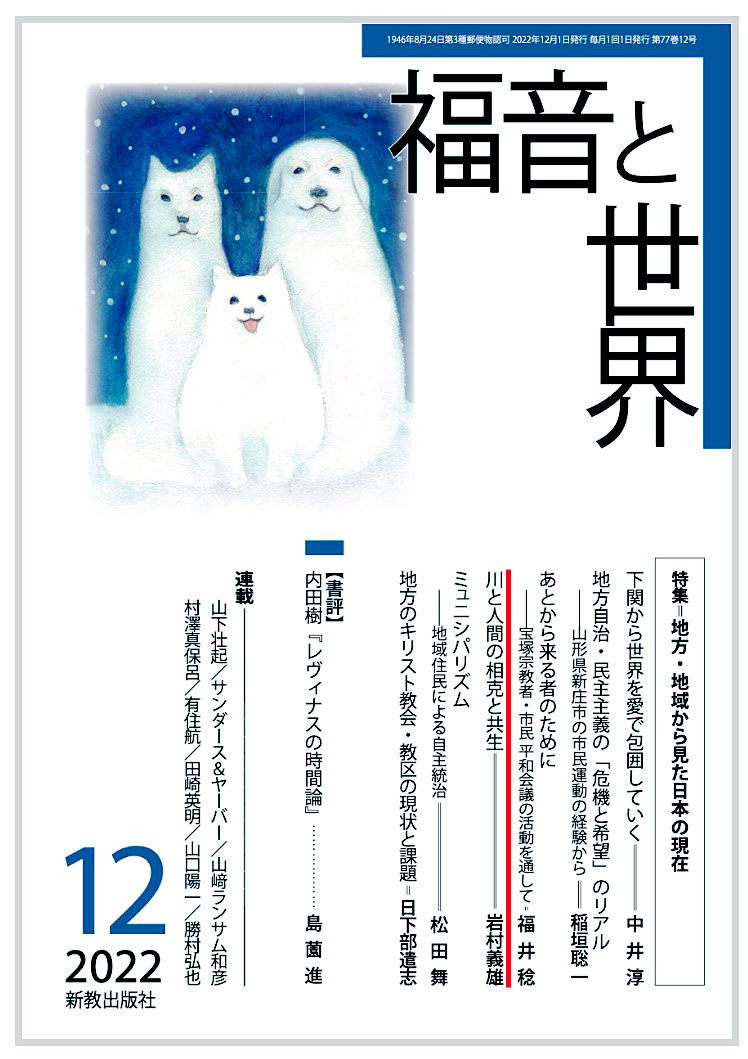
『福音と世界』誌(12月号)
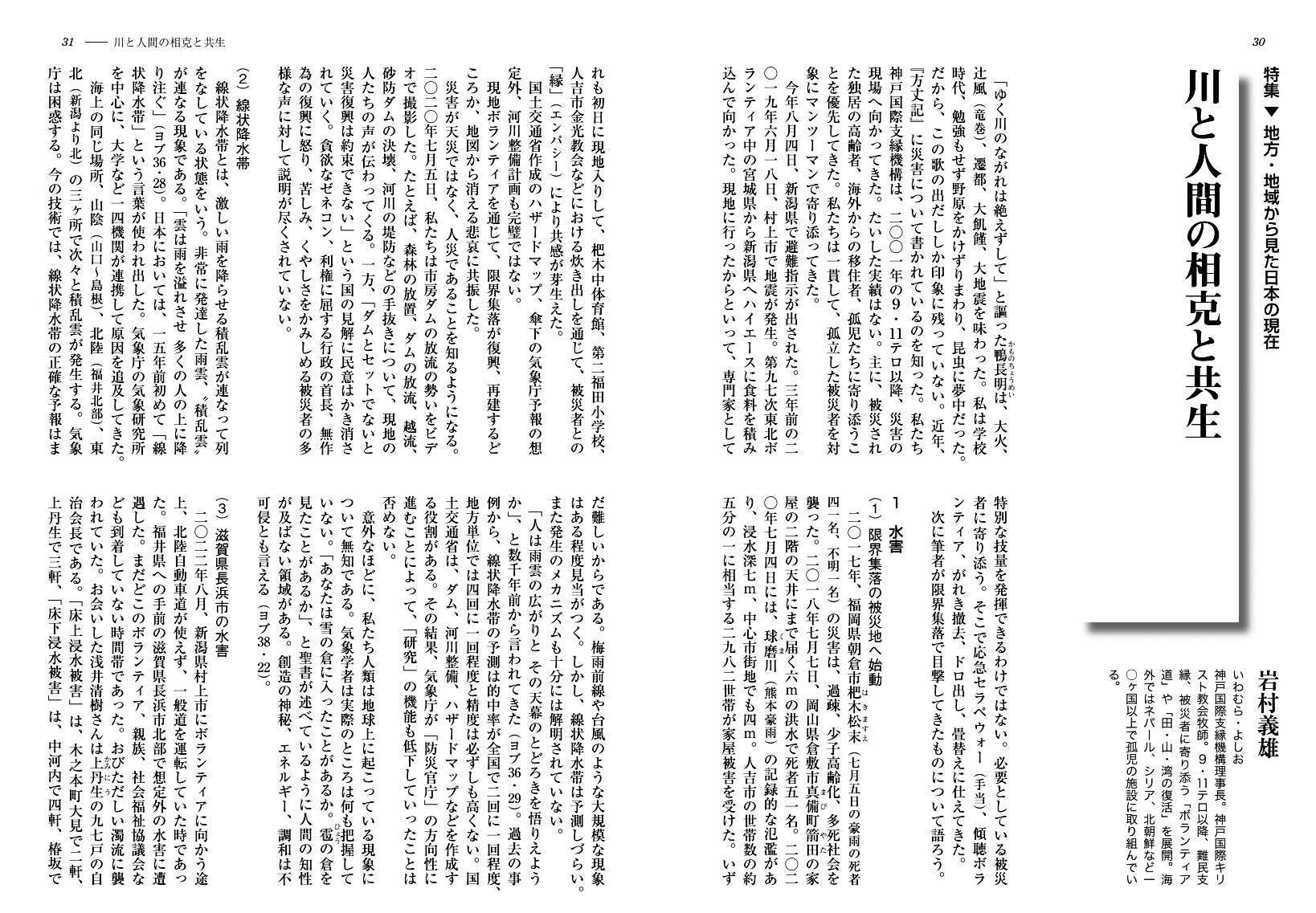
「川と人間の相克と共生」(『福音と世界』誌12月号 ①)

「川と人間の相克と共生」(『福音と世界』誌12月号 ②)

The 5th: “Restoration of rice fields, mountains, and bays”
“Ishinomaki Kahoku”, Tsutsujino ⑤ (October 31, 2017)
Kenji Miyazawa wrote “Amenimo Makezu (Strong in the rain)” on November 3, 1931 (the reverse of 3.11). There is a feeling of the soul that common to Tohoku people.
In July 2011, by the guide of former principal Mr. Shoichi Abe, we visited the trace of the schools at Naburi, Funakoshi, and Yagawa at Ojika Peninsula with Professor Mr. Mitsugu Shinmen (Miyagi Gakuin Women’s University) and Mr. Kinichiro Sato. Village where is depopulating, aging, and declining birthrate was attacked by the large earthquake and tsunami. The words of the monk xxx at Nagori, “Although it is my personal opinion, as more education progress, more depopulation also progress” had a power. It is because the young generation abandons their hometown and lives in big cities.
Kenji Miyazawa let people in Hanamaki listen “the Pastoral Symphony” of Beethoven. He wanted to say people that “you do not need to go to the cities and it’s better to stay here”. Our organization marked the “restoration of rice fields, mountains and bays” as our flag. Our small help to rethink the hometown had started.
Mr. Masahiro Sato, who is the forerunner of ancient rice, lives at upstream of Kitakami River. He cooperated for the project of “rice field art” at Ishinomaki in 2012. By the support students from agricultural school from Hyogo Prefecture and Miyagi Prefecture and family of Mr. Masaru Abe, we could complete the rice field art at Sawada. The young people of Kobe had never been carried a sheaf of rice until that time.
There is Okawa Elementary School in Kamatani. We did tree thinning, pruning, firewood making, and char-grilling in the forest of the back of the school by the request from the forest owners’ cooperative, and our face was covered black powder. Nobody praised us.
We could not do work properly, which were introduced by fishermen’s union (Chief, Mr. Kazuo Tanno), such as we collected seaweeds by riding on a boat of Mr. Takumi Honda, and hanged seeding collectors of an oyster of Mr. Yasuori Tanno at the sea.
Volunteers are just “Dekuno-bou”. However, it was proof that the affected victims were not forgotten from japan by our “visiting” of the affected areas. “What amateurs can do?” Farmers and fishermen were unfriendly for the beginning. However, eventually, their kind smiles “Never be defeated by rain and wind” are restored.
「田・山・湾の復活」のテーマで主な発表系譜
① 神戸松蔭女子学院大学 「東北の『田・山・湾の復活』」 2012年3月12日
②「みんなで考える9条・明舞の会」 2012年5月13日 「田・山・湾の復活」
③ 季刊誌『支縁』「田・山・湾の復活」連載 No.1(2013年2月3日)~(英文付)
④ 宗教倫理学会 「田・山・湾の復活」(英文付)
日 時 : 2013年8月27日(火) 午後2時半~3時半
場 所 : 関西大学飛鳥文化研究所・セミナーハウス
⑤ 『石巻かほく』つつじ野 (2017年10月3日付) 「田・山・湾の復活」(英文付)
東北ボランティアに参加した若者たちが発行している季刊誌「支縁」の第2号(2013年2月3日発行)から,東北ボランティアの働きの核になる「田・山・湾の復活」を連載しています。
大震災は無縁社会,孤族(こぞく)をますます広めました。単身の高齢者,水産の仕事がなくなった中高年男性に「自己責任」をせまることはできません。地縁,血縁の関係をずたずたにした震災の影があります。新しい縁作りに収穫祭は息を吹き込むきっかけになればと被災地の方々はおっしゃっています。
便利で快適な現代生活は,人間が「非人間化」「非人格化」「機械化」で疎外 ![]() [ギリシア語 アパルロトゥリオーの原意は「遠ざけられている,疎外されている,無縁になっている」]されています。自然の生態が狂い,動植物の絶滅危惧種も増大の一途です。原子力発電所も人類を危機に陥れている現実から目を背けてはならないでしょう。
[ギリシア語 アパルロトゥリオーの原意は「遠ざけられている,疎外されている,無縁になっている」]されています。自然の生態が狂い,動植物の絶滅危惧種も増大の一途です。原子力発電所も人類を危機に陥れている現実から目を背けてはならないでしょう。
ボランティアは「小さな美しいこと」をするのが目的ではありません。自らを被災地で共苦する行為です。実際,2012年12月には車椅子の方,86歳の方も参加しています。(ラジオ関西 2013年1月11日放送)。
「オレす(死)んだらば,だれも忘れでしまうべェ。津波のこども忘れでしまうべなス。忘れでぼしぐねえのス」
有能な人が効率,能率を追求してするのではありません。ひ弱な者でさえ,主体的にかかわり,気が付いたら石巻市にいたというのがいいのです。自由な中に新しい責任の感性が育っています。参加者が東北から帰ってきた時に,皆,目を輝かせて新しい縁について語るのが印象的です。被災者は「置き去りにされるのではないか」という不安がもたげています。
メディアに出ない寂しさ,くやしさ,怒りに寄り添い,皮膚感覚で共有しましょう。あなたも伴走者になってください。
(季刊誌「支縁」No.2から引用)。
2013年4月13日の早朝,淡路島を震源地として地震がありました。急な揺れで目を覚まし,阪神淡路大震災が頭をよぎった方も多かったのではないでしょうか。
私自身,18年前を鮮明に思い出しました。災害を改めて身近に感じると共に,備えのないことに不安を感じました。ほぼ一週間に,千島列島,宮城県沖,三宅島近海,鳥島近海にM6級の揺れが相次ぎました。
阪神・淡路大震災の時は,4ヵ月で倒壊した家屋の多くは撤去されました。しかし,東北では津波で更地になったままか,住めなくなり,住んでいた人の生存するかどうかわからないで放置されている家が点在しています。復旧,復興,再建が遅々として進んでいない東北。にもかかわらず,ボランティアのNPOなどが次々と撤退しています。財政が底をついたからです。三回忌も終わりましたが,国,県も何もしてくれないと,つぶやく被災者たちの心は凍てついています。地面を匍うような小さな働きですが,私たちの来るのを待っていてくださるので神戸から今月も向かわせていただきます。 (季刊誌「支縁」No.3から)。
2012年4月23日(月)午後1時半~午後3時 石巻市亀山紘市長の講演
神戸文化ホール 大ホールにて
「田・山・湾の復活」 岩村義雄
完全原稿 No.1~14 「田・山・湾の復活」 季刊誌『支縁』 No.1~ (2013年2月3日号~ 4頁)
英文 Complete manuscript of English No.1~14 ⇒ “Resurrection of Rice Field, Mountain, and Bay” Quarterly journal “Shien” From 20121103~
新聞記事 ⇒ 『石巻かほく』つつじ野①~④ (2017年10月3日~10月24日)『石巻かほく』つつじ野⑤~⑨ (2017年10月31日~11月28日),
英文 News Article ⇒ “Ishinomaki Kahoku”, Tsutsujino ①~⑨ (Oc 3ーNov.28, 2017)
その一 序 季刊誌『支縁』 No.2 (2013年2月3日号 4頁)
午後2時46分,荒廃がすごいのです。見渡す限り,がれき,崩れた家屋,震災の爪痕がどこまでも続きます。石巻市でも4千名近くの人々が犠牲になりました。「恐懼(おそれ) と陷阱( おとしあな)また暴行と滅亡我らに來れり。わが民の女の滅亡(ほろび)によりてわが眼には涙の河ながる」(哀歌 3:47-48 『文語訳』)。
津波は石巻市牡鹿半島の北東にある笠貝(かさがい)島を襲いました。高さ(遡上高(そじょうだか))は43メートルです。明治三陸地震を上回ったのです。山の樹木も海におおわれ,木々もだいなしになりました。田んぼにも自動車などが串刺しになっています。日本で一番おいしいカキ,リがとれる万石浦湾で生活する漁業の家も冠水でつかってしまいました。
山からの水が田んぼの稲などを育てます。積み重なった葉っぱが良い土を作ります。きれいな水がおいしい作物を作ります。無農薬,有機の土から出る排水が川となり,海に注がれます。「川はみな海に注ぐが海は満ちることなく どの川も,繰り返しその道程を流れる」(コヘレト 1:7『新共同訳』) 。自然は循環しています。山から海へ行き巡り,海洋で蒸発し,雨となってまた山に降り注ぐのです。
地球が誕生してからずっと自然界の生命もお互いに縁があります。肉食動物によって草食動物が食い尽くされなかったのはどうしてでしょうか。草が地球のいたるところにあってありつけたからです。胃袋の大きい牛,羊,うさぎなどの草食動物はたくさん子供を産みます。反芻する生き物の胃には特別な微生物がいます。消化に役立つ微生物と助け合って生き延びてきました。肉を貪る獣が襲いかかり,草食動物の数が少なくなります。
すると餌がなくなり食う獣が減ります。一方,おそろしい獣がいなくなるといつしか食われる小動物の数が増えたりします。何世紀も繰り返されてきたのです。
“Resurrection of Rice Field, Mountain, and Bay”
Kobe International Sustaining Organization
Chairman Yoshio Iwamura
(1) The scar of the Tohoku Earthquake
At two forty-six p.m., the devastation is terrible. As far as the eye can see, the rubble, the collapsed house, the scratch of the earth-quake disaster continues. In Ishinomaki City however, nearly 4,000 people lost their lives. “We have suffered terror and pitfalls, ruin and destruction. Streams of tears flow from my eyes because my people are destroyed.”(Lamentation 3:47,48)
The surbase shellfish ( the limpet ) island which is in the northeast of Ishinomaki City Oshika peninsula attacked by the tsunami. The height of the water is 43 meters by going upstream. It exceeded Meiji Sanriku earthquake.
A tree on the mountain, too, was covered with the sea and the trees, too, were completely devastated in the spoiling.The car
and so on were impaled in the rice paddies. Mangokuura bay, where the houses of fishermen who made a living from Japan’s most delicious oysters and seawood laver used to be, was also flooded. Water from the mountains is used for rice in the rice paddy and so on. Layers of leaves enrich the soil. Clean water helps produce delicious crops. The water which drains from
the chemical-free and organic earth becomes a river and flows out the sea. “All rivers flow into the sea but that any river flows
through the repeat field without sea’s filling. ” (Ecclesiastes 1:7 “the New Interconfessional Translation Bible” 『新共同訳』shin kyōdō yaku seisho 1987)
Nature has circulatory system. It flows from mountain to sea, evaporates over the sea, becomes rain which falls again in the mountains. Since the earth was born, life in the natural world has always been inter-connected.Why is it that carnivores have not eaten all the herbivores? It is because grass can be found all over the earth. Herbivores such as cows, sheep, rabbits with big stomachs have a lot of babies. There is a special microorganism in the stomach of ruminating animals. With the help of microorganisms which are good for the digestion, they survived. Fresh-eating animals attack herbivores and their numbers decreases. Then, as their prey has become scarce, the number of flesh-eating animals also decreases. On the other hand, the number of the all too soon eaten small animals increases when their predators disappear. This is a pattern which has been repeated over many centuries.
その二 自然と共に生きる 季刊誌『支縁』 No.3 (2013年5月3日号 4頁)
自然は人間が恩恵を受ける源です。ところが,田山湾はお金を儲ける所になってしまいました。貪欲さを満たすために農薬,成長させるためにホルマリン,能率のはかどる機械類を使います。食べる食物の安全など一切考えません。人間が自然界の何よりも偉いかのように振る舞います。里山にいたスズメやミツバチが少なくなりました。夕方になると空いっぱいに飛んでいた小さな虫ユスリカもいません。食べる虫がいなくなったツバメも消えつつあります。
東北地方も日本の他の地域と同じように,海の近くの沼地がなくなりつつありました。住宅のため更地になったり,大きな水田にするために自然環境が変わりました。ですから津波が襲った時,海から40キロ離れた奥地にまで水が覆ったのです。海岸や河口の湿地を住みかにするヒヌマイトトンボはどうなったでしょうかす1)。神戸から二年間訪問していますが,出合えません。温暖化により,北へ移動していったトンボ,蝶の住みやすい居場所がなくなりつつあります。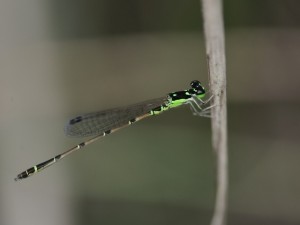
ヒヌマイトトンボ
人間に地球を治めるようにという神の言葉があります。「神は彼らを祝福して言われた。『産めよ,増えよ,地に満ちて地を従わせよ。海の魚,空の鳥,地の上を這う生き物をすべて支配せよ』2)。「従わせよ」[ヘブライ語カーヴァシ]や,「支配せよ」[ラーダー] が使われています。ラーダーは「(羊の群れ)を導く」(エゼキエル 34:4『新英語聖書』) にあるように暴力的に抑えつけるのではありません。3)人間は自然をやさしくお世話せねばなりません。だが,利得のため,公害,汚染,傲慢な支配によってだいなしにしてきました。自然と共に生きる原点に帰りましょう。
1) 沼地などの減少により生息地がせばめられ,絶滅危惧種に指定されているイトトンボ。
2) 創世記 1:26-28。
3) 『聖典と現代社会の諸問題』(樋口進 キリスト新聞社 2011年 76, 77頁)。
(2) The stewardship
Nature is the source from which human beings benefit. However, the rice paddy, the mountain and the bay had become a place to make financial profit from. Agricultural chemicals are used in order to meet demand, as well as formalin and, increasingly efficient machinery to increase growth. No consideration is given to whether or not the food is safe to eat.
Human beings behave as if they mattered more than anything else. The sparrows and the honey bees which were found in Satoyama (undeveloped woodland near populated area) were decreased. No midges can be seen flying in the evening sky. Swallows that eat these insects have disappeared, too. In the Tohoku district like other areas in Japan, marsh land near the sea was already disappearing. The natural environment changed to become a wilderness for the habitation and to make bid wilderness and were transferred into vast rice paddies, the natural environment changed. Hence, when the tsunami struck,
water was carried inland 40 km from the sea. What has happened to the Hinuma dragonfly 1) which lived on the seashore, estuary, and wetlands? I have been visiting from Kobe for two years, but I haven’t been able to see one. With global warming, dragonflies and butterflies who migrated north can live, but the habitant is disappearing. God instructed mankind to rule the earth and God blessed them and said to them, “Be fruitful and increase in number; fill the earth and subdue it. Rule over the fish in the sea and the birds in the sky and over every living creature that moves on the ground.” 2) “Subdue”(the Hebrew kabash) and “Rule over” (the Hebrew radah) are used. The word radah is quoted in Ezekiel as well. We find it“have driven with ruthless severity”(Eze 34:4 NEB) and does not mean “forcefully exploit.”3) So the human race must look after nature kindly.
However, for the sake of profit, we have wrought havoc with all kinds of pollution, in the arrogant way we have ruled over the earth. Let’s go back to starting point, living in harmony with nature.
1) Mortonagrion hirosei (species of damselfly), whose habitat of marshlands, etc., is disappearing and is listed as an endangered species.
2) Genesis 1:28 “The New English Bible”.
3) “Miscellaneous problems for Scripture and Modern Society” Susumu Higuchi Kirisuto-Shinbunsha 2011 pp.76-7.
その三 自然と共に生きる 季刊誌『支縁』 No.4 (2013年8月10日号 4頁)
東日本大震災の年,宮城県石巻市牡鹿半島を訪問しました。シカの名前が至るところにあります。 アイヌの人は鹿がたくさんとれるとカムイ(アイヌ語「神」)に祈りました。4) リアス式の海岸線は津波で家,命,仕事はすっかり流し去られています。案内くださった阿部捷一氏はかつて地域の小学 校の校長です。沖から半島を見ますと,緑豊かな山並みです。
カエデやコナラなどの広葉樹が繁って います。森に入ると,腰まで落ち葉に埋まるほどです。落ち葉の下には長年にわたり積み重なってきた腐葉土があります。カブトムシ,クワガタムシがもぐっているのをみつけようと手をいれると,キノコの臭いがします。
宮城県気仙沼(けせんぬま)湾で「森は海の恋人」の運動をすすめている畠山重篤(しげあつ)さんが います。衰えた海の力をよみがえらせるために,海に注ぐ川,そして上流の森を大切にしなければならないことに気づかれました。
湾に注ぐ大川(おおかわ)上流の森(室根山(むろねさん))に苗を植えます 。1989年より50種25万本の広葉樹を子供たちといっしょに植え始めました。山村に住む歌人熊谷龍子(りゅうこ)さんの「森は海を海は森を恋いながら 悠久(ゆうきゅう)よりの愛紡(つむ)ぎゆく」という一首から生まれました。 5)
耳を木にあててみると音がします。生きています。詩は樹木を語源としてまさに歴史の中で流れているような響きがあります。
私たちは自分勝手な生き方をして自然をこわしてきました。故郷を忘れた放蕩息子です。「ここを 出て父の家に帰り」6)とふるさとの自然を慕う息子にとり,帰るところは森です。森であるエデン の園には「命の木」と「善悪の知識の木」がありました。7) 森林を守るか,ダムを造るかの迷いを人間は繰り返してきています。東北でもシカが増えて困っています。「命の木」とは,森の苗を大切にし,自然の「生態系」を考えます。一方,「善悪の知識の木」とは,自然を支配するヒトの「生命」を大切に考え,シカの数を減らさざるを得ません。自然の「生態系」それとも人間の「生命」のどちらを先に考えるべきでしょうか。「田・山・湾の復活」とは両方を考えながら,みんながそうだとうなずく道を開きます。他の生き物といっしょにつながりをもって自然と共に生きていくのです。( 次号に続く)
4) 拙論『牡鹿半島 聞き取り調査(4) 』神戸国際支縁機構 2011年。
5) 『歌集・森は海の恋人』(熊谷龍子 北斗出版 1996年)。
6) ルカ 15章18節 『新約聖書 柳生直行訳』(新教出版社 1985年)。
7) 創世記 2章9節 『新共同訳』。
(3) Symbiosis with nature
The year of the Tohoku Earthquake, we visited the Oshika peninsula in Ishinomaki city, Miyagi prefecture. This is the place where the deer gets its name from. An Ainu person prayed to “kamui”(the Ainu for “god”) to be able to catch a lot of deer.4) Along the ria coastline houses, livelihoods and lives were completely swept away. Our guide, Abe Shoichi, was a formerly headmaster in the elementary school in the area. When you look at the peninsula from out of sea, it looks like a lush green mountain. The broadleaf tree of the maple and Quercus serrate and so on flourishes. When you enter the forest, the piles of fallen leaves come up to one’s waist under the fallen leaves is humus which is the produce of many years. If you put your hand in to find a rhinoceros beetle or stag beetle with many crawling about inside, a mushroom smell will emerge.
In Kesennuma, Miyagi prefecture, Shigeatsu Hatakeyama is publishing the“the forest is the sea’s sweetheart”movement. It was noticed that, in order to revive the acting forces of the sea, the river which flows into the sea and the source of the river in the forest must be tended to carefully. Young plants are planted in the forest of Mount Murone where the Ookawa River, which flows into the bay, has its source. From 1989 they started planting 250,000 trees of so different varieties with the help of local children.
This was born from the poem. “The forest loves the sea and the sea loves the forest but the sea churns with love that is eternal.”by Kumagaya Ryuko who lives in a mountain village.5) There is a sound when attempting to hit an ear against the tree. It lives. There is a sound as it is flowing through the tree surely in the history as the etymology in the poem. Just as the poem has been born from the womb of a tree, there is a sound that resonates throughout history.
We have damaged the natural world with our selfish behavior. We are the prodigal son who forgot his hometown. “I will leave this place and return to my father’s house” 6); just like the son who longed for the natural environment of home we also are to return home to the forest. In the forest which was the Garden of Eden there was the tree of life and the tree of the knowledge of good and evil.7) Human beings continue to vacillate over whether to protect forest and woodland or build a dam. Even in Tohoku the increase in the deer population is becoming a problem. The term “tree of life” reminds us we should take care of young plants and (preserve) the ecosystem. On the other hand “the tree of the knowledge of good and evil” points to the importance of the life of human beings who rule over nature, suggesting that the deer population must be culled.
Which should be given priority – the natural ecosystem or the life (concerns?) of human beings?
If we think about the restoration of rice paddies, mountain and ocean bay from both points of view we may find a way everyone can agree on. We need to live in harmony with nature and other creatures.
4) Kobe international Supporting Organization “Oshika peninsula survey (4) ” July 2nd in 2011.
5) “The forest is the sea’s sweetheart” Ryuuko Kumagaya Hokuto-Shuppan 1996 p.210.
6) Luke 15: 18 “The New Testament” Yagyu’s translation Shinkyo-shuppan 1985.
7) Genesis 2:9 “the New Interconfessional Translation Bible”(『新共同訳』shin kyōdō yaku seisho 1987)
その四 白砂青松 季刊誌『支縁』 No.6 (2014年2月15日号 4頁)
今から約120年前のことです。石川啄木は白砂青松(はくしゃせいしょう)で書きました。「砕けてはまたかへしくる大波のゆくらゆくらに胸おどる洋うみ」と波打ち際の波しぶきに感情が高まった詩情を残しています 8)。
1927(大正2)年には,北上川河口から東に万石浦水道まで4㎞の砂浜に約126mも松林が続いていたことが観光案内に残っています。ハンモックや帽子を無料で貸しています。海辺の店で飯一膳2銭,酒一杯2銭,漬物一皿2銭などと紹介。
3・11で,高さ4mの堤防と,20mの防潮林の松並みを超えて,津波が渡波町を襲いました。1897(明治30)年に,植えられたクロマツは震災でどうなったでしょうか。
震災直後,地盤沈下で,壊れた長浜幼稚園(万石浦幼稚園に合併)付近のクロマツはヘドロを呑み込んで真っ茶色でした。長い年月,飛砂(ひさ),台風,霧などから渡波を守ってきました。海岸林は堤防と違います。津波を止めることはできませんが,速度を弱めます。
チリ津波(1960年)は日本を襲い,三陸で142名が犠牲になりました。日本まで17500㎞も離れています。それが22時間で到着しました。津波はつまり時速約730㎞ということになります。ジェット機並みの速さです9)。
渡波伊勢町の遠藤トシ江さん(83歳)は「新幹線より速くて,逃げられんないちゃ」と恐怖体験を語っています。防潮林は海岸際で津波をゆるめて人々が逃げる時間のゆとりの役割も果たしました。他にも,津波の引き波で海に持って行かれそうになった時,枝に服がひっかかって助かった人もいます。
石巻市長面(ながつら)や,仙台市海岸公園,岩手県の名勝7万本の「高田松原」の方は木が倒れ,流木化しました。海のもくずとなり,何も残っていません。津波は襲い掛かり,幹を折るにとどまらず,根元から引きちぎり,根がむき出しになっています。岩手県陸前高田市は奇跡的に一本残った松を復興のシンボルとしています。
松などの針葉樹は根が約45センチと浅く,天災には弱いのでしょうか。代わりに広葉樹を植えてはどうかと,広葉樹林の植樹をする運動が東北各地で起こりました。
長浜の海岸林は「マツの枯死(こし)が目立つようになった」と研究者にも見捨てられました 10)。
不思議なことに,長浜の茶色になった松林は死んでいませんでした。2年を経て,再び新しい緑の葉が繁り始めました。生命力に驚きます。
なぜでしょうか。長浜のクロマツの背景と展望を次号で探ります。
8) 1902(明治35)年5月28日,歌人石川啄木︹1886-1912は16歳[盛岡中学五年生]の時,修学旅行で石巻市渡波長浜に立ち寄った際,記しました。
9) 『津波災害』(河田恵昭 岩波新書 2011年40~41頁)。
10) 『海岸林との共生』(中島勇喜・岡田譲 山形大学出版会 2011年 グラビア13頁)。
(4) “白砂青松 Haku-Shya-Sei-Shou (White / Sand / Green / Pine Tree)”
It is about 120 years ago from now. Takuboku Ishikawa wrote about his emotional feeling about waves at seaside in his book “Haku-Shya-Sei-Shou” as “My heart is excited by the continuing back and force of the big wave of splash.8)
In the tourism guide, there is an information about that there were 126m high pine trees along with the coast and it continued 4km from the estuary of Kitakamigawa River to the east of Mangokuura-Suidou in 1927 (Taisho 2). Hammocks and hats were free to rent. Also it introduced about the price of food (2 coins for one rice bowel), drinks (2 coins for 1 cup) and pickles (2 coins for one dish).
In 3.11, the Tsunami flood over the 4m high embankment and 20m high of pine trees, and it struck Watanoha Town. What had happened to the Japanese black pines which were planted in 1897 (Meiji 30) at the earthquake disaster?
Immediately after the earthquake disaster, black pines near the Nagahama Kindergarten (combined with Mangokuura Kindergarten) which was broken by the land subsidence, were colored into brown. Those pine trees protected Watanoha area from sand blow, typhoons and fogs for a long time. But those are different from embankment. It cannot stop the Tsunami. However, it weakened the speed of the Tsunami.
The 1960 Valdivia earthquake attacked Japan and 142 people were sacrificed in Sanriku area. Chili is 17500km away to Japan and it reached Japan in 22 hours. Therefore, the Tsunami was about 730km/h. It is as fast as a jet plane. 9)
Caption Nagahama coast Rie Okuno (The 25th Batch)
Toshie Endo (83 years old) from Watanoha Ise Town told about her unspeakable nightmare as “It was faster than the Express train and I could not escape from it”. A tide‐water control forest loosened the speed of the Tsunami, and it also played a role to give people extra time to run away. There were also people who were saved by trees because their clothes were caught in its branches, when they were about to be taken in the Tsunami backrush.
At Nagatsura at Isinomaki City, Kaigan Kouen at Sendai City and “Takata-matsubara” of 70,000 pine trees scenic spot in Iwate Prefecture, trees were fallen and it became driftwoods. All of them were swallowed by the sea, and nothing remains. The Tsunami attack, not only to break the trunk but it torn off from the root, and their roots were exposed. Miraculously, only one pine tree remained and it became a symbol of reconstruction at Rikuzentakada City, Iwate Prefecture.
Coniferous trees such as pine have shallow roots of about 45 cm, and weak in natural disasters. Is it true? A movement of planting broad-leaf trees, instead of coniferous trees, had occurred in many regions of the Tohoku area.
Nagahama coastal forest was abandoned even by researchers as “Tree death became obvious”.10)
Caption: Watanoha, Nagahama Coast, before the disaster, After the disaster
Unbelievably, brown-colored pine trees at Nagahama were not dead. After two years, new green color leaves began to flourish again. We were surprised by their life force. Why? I will explore the background and outlook of Nagahama black pines in the nest issue.
8) Poet Takuboku Ishikawa [1886-1912] wrote about his visit at Watanoha-Nagahama, Ishinomaki City during his school trip in 1902 (Meiji 35), when he was 16 years old (the 5th grade in Morioka Junior High School).
9) Kawata, Y. 2011. “Tsunami Saigai”. Iwanami Shinsho. p.40~41.
10) Nakashima, Y. Okada, J. 2011. “Kaigairin-to Kyosei“. Yamagata University Publisher. p.13.
その五「遡上高」 季刊誌『支縁』 No.7 (2014年5月15日号 4頁)
津波は「遡上高」(そじょうこう)があります。11)
6,7mの防波堤と,20mの松林のどちらがふさわしいか,じっくり考えるべきです12) 。
長年,厳しい自然と真っ向からぶつかりながら,人間の営み,田・里山・里海の生き物を守ってきた先人の知恵を切り捨ててしまってはいけません。
なぜ長浜の松林が残ったのか,30数回訪問してわかったことがあります。ひとつに,海水浴のすべての砂が松林の根元付近を覆ったのです。次に,長浜海岸のクロマツは密集しすぎていませんでした。100㎡に18本ずつの間隔でゆとりがあります13)。すき間に,カワラナデシコ,ハマエンドウ,ネジバナが生い茂っていたと仮設住宅の今野かづ子さん(64歳 松原町 現在防波堤工事中)は語ります。林務作業の人件費もあって下草刈りや枝打ちの手入れを小まめにしていなかったことも功を奏しました。太い松と細い低木が棲す み分けて共生しています。人間生活も同じです。人口が集中し,摩天楼の都会だと窮屈で,ストレスを感じやすくなるのと同じでしょう。つまり一見,松は邪魔者の低木雑草などに松自身が我慢することによってたくましいマツになっていたのです。人間は過保護によって成長が阻まれるように,松だけの単層群落にするとひ弱になってしまいます。
防潮林である松林は景観,冬の寒風,津波の速度をゆるめる役割を果たします。無機質な防波堤,防潮堤は20mを超える津波にはまったく無力です。コンクリートの予算に億単位をかけても住人の心に安らぎはもたらされません14)。
地域のみんなでスコップひとり一杯の土をもって来るのです。1mほどの盛り土にします。その上に松林を移動します。自分たちの手で海岸林を造るのです。ヨモギ,ヤブカンゾウ,フキ,シドケ,ハマニンニクなどの下草や砂草植物,トベラ,マサキなどの低木,ショウロなど微生物も植栽地を支えている大切な構成メンバーです。
海岸林から無機塩類が湾に流れ出,植物プランクトンが育ち,魚の餌となります。里海がよみがえります。美しい自然の回復は安心,平安,誇りをもたらします。社会も同じです。社会福祉がなければ生きていけないような高齢者,障がいをお持ちの方,シングルマザーたちを切り捨ててはいけません。共生して織りなす結びあわされた社会こそが「ふるさとの木によるふるさと」です。
11) 亀山紘『東日本大震災における死』(「『死』を考える」講座 神戸新聞会館 2012年4月23日)。
12) 『防潮林の津波に対する効果と限界』(首藤伸夫 海岸工学講演 論文集 45 1985年 465-469頁)。
13) 『東日本大震災における公園緑地等第一次現地概査』報告 2001年5月16日 (社)日本公園緑地協会。
14) 『東北追悼と復興の祈り』(大國龍笙宮司談話メモ 阪神宗教者の会 2013年)。
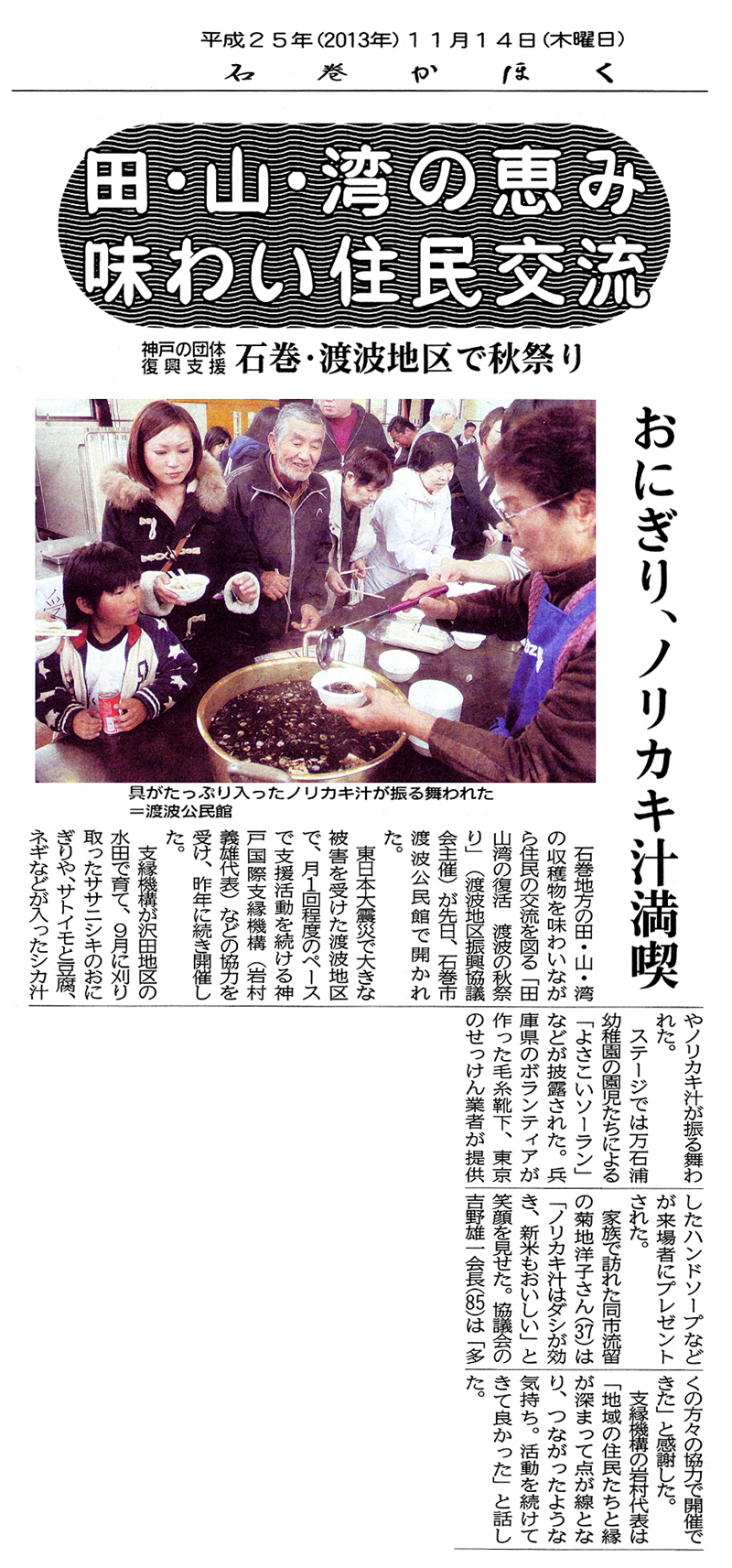
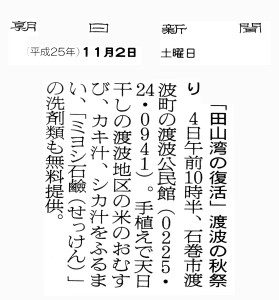
田山湾の復活 『石巻かほく』(2013年11月14日付)
『朝日新聞』(2013年11月2日付)。
(5): “遡上高 So-Jyou-Kou” (Runup Height)
The Tsunami has “runup height”. 11)
We should think carefully which of 6~7m breakwater and 20m pine trees is suitable. 12)
We should not cut off the wisdoms of our predecessors, who had been protected our daily life, rice fields, villages and mountains, sea and living things for a long time while facing straightly to severe natural environment.
After visiting more than 30 times, I found out the reason why the pine trees remained at Nagahama. First, all the sand of the coast covered the base of the pine forest. Secondly, the black pines on the Ngahama coast were not too crowded. There is enough space among trees because only 18 trees are planted within each 100 square meters.13) Kazuko Konno (64 years old. Originally from Matsubara-cho where is currently under reconstruction of breakwater), who lives in temporary house, told us that there were Japanese dianthus, beach pea, and spiranthes sinensis were naturally grew in the pine forest. Moreover, since there were budget for the forestry labor work cost, managements of cutting weeds and pruning were well worked out. Both thick and thin shrub pine trees share space to live together. Human life is also the same. It is same as that you fell cramped and became sensitive to stress at the skyscraper city where population is concentrated. In fact, pine trees became stronger because they survived against hindrance of other grasses and lower trees. Just like human beings cannot grow themselves if they receive over protection, pine trees also will be weak if they grow only among themselves without other species.
Caption: The Tsunami attacked at Nagahama Coast. Rie Okuno (The 25th Batch)
The pine forest, which is the tide control forest, plays a role of landscape, protecting from winter cold winds and loosening the speed of the Tsunami. Inorganic tide embankment and tide embankments are totally powerless against more than 20 m high of the Tsunami. Even if you spend 100 million yen budget on the cement facilities, it will never bring peace to the hearts of residents.14)
Everyone in the area brings one scoop of soil to make 1 m high of soil mound, and move the pine trees on it. We will make the coastal forest with our own hands. Undergrowth and sand grass plants such as Japanese mugwort, Orange daylily, Fuki, Momijigasa, and Hamaninniku, shrubs like Japanese Cheesewood and Japanese spindle, microorganisms such as truffle is essential constituent member to support the planning area.
Mineral salts flow out from the costal forest into the bay, phytoplankton grows up and it becomes a food for fish. The local sea will be restored. The recovery of beautiful nature brings secure mind, peace and pride. Society is also the same. We should not abandon elderly people who cannot live without social welfare support, people with handicap, and single mothers. The society that gets people to live together is the “hometown by the local people’s tree”.
11) Kameyama, H. 2012. “Higashinihon Diashinsai-ni-okeru Shi” (The course of “Think about the Death”). Koube Shinbun Kaikan. April 23.
12) Shyuto, N. 1985. “Bouchorin-no-Tsunami-ni-taisuru Kouka-to-Genkai“. Lecture at Coastal Engineering. Ronbunshyu 45. p.465-469.
13) 2001 Report. “Higashinihon Daishinsai-ni-okeru Kouen-ryokuchi-tou Daiichiji Genchi Gaiza“. Parks & Open Space Association of Japan. May 16.
14) 2013. “Touhoku-Tsuito Fukko no Inori“. Dialogue note with Ryushou Ookuni.
その六 里山とは機構である 季刊誌『支縁』 No.8 (2014年8月10日号 4頁)
自然を耕し,雑木林,ため池,田畑を人間はつくってきました。里山・田園・里海は循環した「機構」つまりシステムです。動植物などの生態,土壌,風土だけではなく,人間の手による農具,石仏,薬草などが関わっています。人が土を耕作を通して築いてきた landscape風景です。
日本に豊かにある資源は水です。日本のふるさとと言えば,森から清水が湧き出て,田園を潤します。生活に必要な水,農耕,治水氾濫にどう制御するか先人はいつも守ってきました。
「春の小川」(高野辰之作詞・岡野貞一作曲)は小学校で歌います。文部省は当初,国がつくったとし,作成を口外しないよう指導していました。高野,岡野の二人は「ふるさと(兎追いしかの山…)」,「紅葉(秋の夕日に 照る山紅葉…),「春が来た(春がきた 春がきた…),」「朧月夜(菜の花畑に入り日薄れ…)などのメロディも讃美歌15)から明治,大正初めにつくられました。
春の小川は、さらさら行くよ。
岸のすみれや、れんげの花に、
すがたやさしく、色うつくしく
咲けよ咲けよと、ささやきながら。
それも日本人に里山を思い浮かばせる名曲です。
春の小川とは,すみれやレンゲが岸辺にあることから,奥山や街中ではありません。人里を流れる川です。上流部と異なり,人が水利を考えて手入れしている田園の用水路です。道も,山道とちがいます。市街地のように真っ直ぐなアスファルトでもありません。田畑の曲がりくねった境界線が道です。春の小川は田んぼに水を届けます。水源は河川,ため池などの堰から引いてきます。
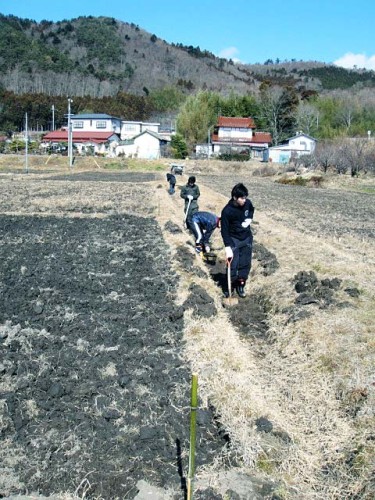
渡波際前の用水路づくり (第10次) 2012年2月 宮元輝君
用水路は上下の勢いある河川と異なり,横向きの小川で毛細血管のように里地をくまなく潤します。ため池も作り,日照りに備えます16)。
里山は全世界にあります17)。日本と同じように,水車,炭焼き小屋があったり,雑木林 copse≪カープス≫があります。春がくるとブルーベル,イチリンソウが林床一面に咲きます。昆虫が花密に群がり,野鳥も集まります。
「主なる神は人を連れて来て,エデンの園に住まわせ,人がそこを耕し,守るようにされた」18)。「耕し」(ヘブライ語 アーバド 「仕える」の意),つまり耕作することから人類は始まりました。「守る」(シャーマル「見守る,救う,世話する」の意)ことを委ねられたわけですから,里山を損なわずに,人が安らぐ環境を守る責任があります。
15)『唱歌と十字架―明治音楽事始め』(安田寛 音楽之友社 1993年)。
16)『平成9年度 農村振興局調べ』兵庫県だけで4万7,596か所,全国には計210,769か所。江戸時代,ため池と300万平方㍍の田園が水害から守った。
17) 『里山を考える101のヒント』(日本林業技術協会 東京書籍 2000年 48-49頁)。
18) 聖書 創世記 2:15。
(6) Satoyama (undeveloped woodland near populated area) is the organization
Human beings have cultivated nature and created miscellaneous trees, irrigation ponds and rice/farming fields. Satoyama, local fields and local sea are the circulated “organization” that is the systems. Not only the ecology of animals and plants, soil, climates, but also human farming tools, stone statues, and medicinal herbs are involved in. It is a landscape that people build through cultivation.
The rich resource in Japan is water. Speaking of Japanese hometown, clear natural water comes out from the forest and it fills the countryside. Our predecessor always kept on how to manage necessary water, farming and flood control for daily life.
“Haruno Ogawa (Small river in spring)” (Lyrics: Tatsuyuki Takano, Composed: Teiichi Okano) is commonly song at elementary school. Initially, the Ministry of Education announced that they produced this song and ordered to these composers not to speak out. These two composers also produced “Furusato (Hometown)”, “Momiji (autumn leaf color)”, “Haruga Kita (spring has come)” and “Oborozukiyo (Misty moon) by the melodies of hymns from the Meiji to early Taisho era. 15)
Haruno Ogawaha Sara-Sara Ikuyo (The spring stream goes smoothly)
Kishino Sumireya Rengeno Hanani (It goes by violets and lotus flowers on the shore)
Sugata Yasashiku Iroutsukushiku (It looks gentle and beautiful color)
Sakeyo Sakeyoto Sasayaki Nagara (With whispering, bloom, bloom)
It is a famous song that brings feeling of Satoyama to Japanese people.
“Haruno Ogawa” doesn’t exist at inside of remote mountain or cities, according to the lines of “Kishino Sumireya Rengeno Hanani”. It is the small stream that flows through villages. It is different form the upstream part, it is the irrigation canal at rice field that people created for their water use. The road is also different from a mountain road. It is not a straight asphalt road like at an urban area. The boundary winding path of the field is the road. Spring small stream delivers water to rice fields. The water source will be drawn from a river or reservoirs.
Caption: Making irrigation canal at Watanoha (The 10th Batch) February, 2012.
The irrigation canal is different from rivers that have up-down moving. It is a sideways stream like a capillary that fills widely all over the village. People also create reservoirs to prepare for drought. 16)
Caption: Reservoirs at Watanoha / Right side Shigeru Kameyama (The 5th Batch)
Satoyama exists in the whole world. 17) Just like in Japan, there are water mills, charcoal-grilled huts, and copses. When spring comes, Common bluebell and Ichirinsou bloom on the forest land. Insects fly over flowers and wild birds also gather.
“The Lord God took the man and put him in the Garden of Eden to work it and take care of it.” 18) “Work (Hebrews, abad ‘serve’)”, that is to cultivate and human beings started from it. Because we are entrusted to “take care (, meaning ‘watching over, rescuing, taking care’)”, we are responsible for protecting the environment where people can feel peace without losing Satoyama.
15) Yasuda, H. 1993. “Shyoukato Jyujika – Meiji Ongaku Kotohajime“. Ongaku No Tomo Shya.
16) According to “Rural Development Bureau Survey in 1997” at Hyogo Prefecture, there are 47,596 places, totally 210,769 places in Japan. During the Edo period, reservoirs and 3 million square meters of rice fields protected people from flood damages.
17) 2000. “Satoyamawo Kangaeru 101no Hinto“. Japan Forest Technology Association. Tokyo Shoseki. p.48-49.
18) Bible. Genesis 2:15
その七 里山 季刊誌『支縁』 No.9 (2014年11月15日号 4頁)
世界的な食料不足が日本に忍び寄るとき,食べ物を輸入に頼っている日本の暮らしは危なくなります。「少欲知足」を忘れています19)。日本では,食料消費全体の2割にあたる約1800万トンを捨てています。このうち,売れ残りや賞味期限切れの食品,食べ残しなど,毎日3000万食が捨てられています20)。
余っている所と,不足している地域に開きがあります。人と里山がうまくかみ合わなくなった時期と同じ頃に感謝の心を忘れるようになりました。
「昔々おじいさんは柴刈りに」という民話があります。花咲かじじいや,カチカチ山,桃太郎などの昔話には山が必ず出てきます21)。柴刈りの「柴」とは雑木林に折れたり,落ちている細い木や枝です。炊事や暖房の「たきぎ」になります22)。木の実,キノコ,山菜もあり,雑木林は人と自然をつなげる役割をしてきました。奥山と里山はちがいます。里山は人が何世紀にもわたって農夫が手入れしてきた交流の場です。里山と奥山の境界線を「峠」と言って,上と下を区別します。
奥山の高木の花ヤマハンノキ,ミズナラの色は地味です。人間,昆虫も見向きもしません。一方,人による雑木林の桜,ホオノキ,ミズキにはいろいろな生き物がいます。トチ,クルミ,クリなど。ドングリ,果実もあります。リス,イタチや,小鳥,昆虫が飛び交い,食べる実が豊かでした。
里山の集落には,田に水を届ける用水路(春の小川),ため池,雑木林の三つが揃っていました。
高度経済成長期に,できるだけ速く湾で水を流すコンクリート製のU字溝が登場します23)。河川から用水路へ流れた魚などの生き物が水田と自由に行き来ができなくなります。サンショウモ,タガメ,コウノトリなどが田んぼから消えました。水中の生き物(植物・昆虫・動物)と陸の生き物が切り離されてしまいました。田は微生物,イトミミズなどによる分解浄化作用もできなくなりました。
乾田になり,高額の農業用機械が田に入ります。農薬,化学肥料は生態を狂わせました。生産を高める農業経済が日本中に広がります。人は自然に溶け込むより,反収の経済を優先します。人間はもはや生態系の一員ではなくなりました。
したがって,里山の心の原像と引き換えに,儲けに走ったため,若者はふるさとに魅力を感じなくなり,都会に出ます。
19)『仏遺教経(ぶつゆいきょうぎょう)』(岩波書店 1936年)にある「欲を少なくして足ることを知る」;「もっとも,信心は,満ち足りることを知る者には,大きな利得の道です。」(聖書 Ⅰテモテ 6:6)。
20) 世界では8億500万人近くが飢餓。食べられるはずなのに「食品ロス」は500~800万トン。コメの収穫量(2012年約850万トン)とほぼ同じ量。一方,発展途上国の8億500万人が十分な食糧がない。(2014年9月16日 国連食糧農業機関FAO);『毎日新聞』(2014年9月17日付)。
21) 5228編の昔話の内,山に関係する民話は32パーセント。『全国昔話資料集成1』(佐藤義則 岩崎美術社 1974年44,111頁)。
22) 1929[昭和4]年に,日本国内で燃料として最初にLPガスが使用された。1963[昭和38]年頃からタクシーの燃料として使われ始め,現在では国内タクシーの約80%がLPG車。
23) 高度経済成長[1954年12月-1973年11月]
(7) Satoyama
When the global food shortage creep up on Japan, the livelihood of Japan, which depends on importing food, becomes dangerous.
We forget about “少欲知足(less / greed / know / adequacy)”. 19) In Japan, about 18 million tons, which is 20% of the total food consumption, is wasted. Among of these, 30 million meals are thrown away every day, including unsold foods, expired foods and leftover foods. 20)
There is a gap between exuberance areas and lacking areas. When people and Satoyama no longer match each other well, at the same time, we began to forget the gratitude mind.
Caption: Image by Rie Okuno
There is a folk tale, “Once upon a time, the old man went to the mountains to gather firewood”. Mountains certainly appear in many Japanese old stories, such as “Hanasaka Jiisan (The Man who made flowers bloom)”, “Kachi-Kachi Yama (Click-Clack Mountain)”, and “Momotarou (The Peach Boy)”. 21) “Firewood” is a thin tree or a branch that you can pick up at copses. 22) It becomes “wood pieces” for cooking and heating. There are tree nuts, mushrooms and wild vegetables in copses and it have played a role of connecting people and nature. Okuyama (upper mountain) and Satoyama are different. Satoyama is the place for communication that farmers have been cultivated for centuries. The boundary line between Satoyama and Okuyama is called “峠Touge (mountain path)”, and it distinguishes between upper and lower place (峠is consisted by 山(mountain) + 上(upper) + 下(lower)).
The color of tall tree flowers like Japanese Alder and Mizunara at Okuyama are simple. Not only human beings but also insects don’t pay attention to it. On the other hand, there are various kinds of living things on trees such as cherry bloomsome tree, Japanese whitebark magnolia and Cornus controversa at cospe where is created by humans. There are also Japanese horse-chestnut, walnut and Japanese chestnut, as well as acorn and fruits. Squirrel, Weasel, birds and insects are living and there are rich food resources.
In the village at Satoyama, three elements that of irrigation canals (Haruno Ogawa) for delivering water to rice filed, reservoir and cospe were prepared.
In the period of high economic growth, concrete U-shaped gutter appeared, which let water flow into the bay speedily.23) Living nature such as fish that was used to be able to flow into irrigation canal from a river cannot come and go into rice fields freely anymore. Such as Floating fern, Lethocerus deyrollei, and Oriental stork disappeared from the rice field. Underwater living nature (plants, insects, animals) and land living nature have been separated. The rice field no longer is purified by microorganisms and sludge worms.
Caption: Irrigation canal (Haruno Ogawa) “樋(Toi)” between rice field and irrigation canal.
The time of dry field season, expensive agricultural machines enter the field. Pesticides and chemical fertilizer changed the ecology system badly. The agricultural economy that increases production expends all over Japan. People prefer economic benefit than living together with nature. Humans are no longer a member of the ecosystem.
Therefore, in exchange for the original image of the heart of Satoyama, people ran into making profit, so young people are not attracted to their hometown and they are tend to move to the city.
19) ‘Less greed and know adequacy’ from “仏遺教経(Butsu-Yui-Kyou-Giyou)“. 1936. Iwanami Shoten. ‘But godliness with contentment is great gain.’ (Bible. 1 Timothy 6:6)
20) In the world, nearly 805 million people are starving. ‘Food loss’, which is supposed to be able to eat, is about 5~8 million tons. It is almost the same amount of the annual rice harvest (about 8.5 million tons in 2012). Meanwhile, 805 million people in developing countries don’t have adequate foods. (Food and Agriculture Organization of the United Nations: FAO. September 16, 2014). “Mainichi Shimbun” (September 17, 2014).
21) Among 5228 of old stories, 32% of folk stories are related to mountains. Sato, Y. “Zenkoku Mukashibanashi Shiryo Shixyusei 1“. Iwasaki Bijyutushya. p.44, 111.
22) In 1929 [Showa 4], LP gas was first used as fuel in Japan. From around 1963 [Showa 38], it has begun to use as fuel for taxis, and about 80% of domestic taxis are LPG cars now.
23) High Economic Growth [1954 December – 1973 November]
Caption: Resurrection of Rice Field, Mountain, and Bay, “Ishinomaki Kahoku”. December 2, 2014.
その八 防潮堤 季刊誌『支縁』 No.10 (2015年2月21日号 4頁)
2013年3月,和歌山大学講師間森誉司(まもり たかし)さん,看護師田平夢宇夜(たびら むうや)君と岩手県南東部の大船渡(おおふなと)を訪問。大船渡は太平洋に臨む約4万人の港湾都市。津波被害で死者340人,行方不明80人に及んだのは巨大防潮堤がこわされたからです。震災から2年も経ているのに,海岸保全施設(護岸や堤防,防潮水門,防潮樋門)が流れ,無残にも崩れていました。
人々が住むのは川が海に注ぎ込む扇状地です。東日本大震災の津波は河川の堤防も乗り越えて,おびただしいビル,家をころがしました24)。昔から津波はたくさんの人のいのちを奪ってきました。1933年,昭和三陸津波では岩手県宮古市田老地区では559戸の内500戸が流されました。人間はなんとか被害をなくそうと闘ってきました。防潮堤,防波堤は最後の砦のようです。1966年,世界最大の防潮堤が田老町に建てられました。車から見上げるほどの高さ10㍍,長さ2600㍍の分厚いコンクリートでできています。現代の「万里≪ルビ ばんり≫の長城」と言われ,海外からも人々は見にやってきました。住民は安心し,どんどん家を建て続けました。「防災の町」として国の内外に知られるようになります。
しかし,東日本大震災の津波は他の三陸沖の防潮堤と同じように土台からなぎ倒したのです。田老町は津波に呑まれ,死者179人,行方不明者6人です。
立派な防潮堤がかえって仇になりました。津波がやってくるのが見えないばかりか,音も聞こえなくしました。避難経路があっても安全と思い込んでいる人間は逃げようとしませんでした。2列もある防潮堤により,万全と信じていたのでしょう。防潮堤は人に慢心をもたらしたのです。
二番目に,防潮堤は水質を悪くします。砂浜から運ばれる種々のミネラルを遮り,海の生き物の生態を変えます。リアス式三陸海岸はアマモの群生地です。クロソイ,ヒラメ,マダラ,ホッケなど50種類以上の稚魚が泥砂地のアマモ群落で育ちます25)。アマモは水中にたくさんの酸素を出します。
防潮堤について次のように報じられています。「震災前は防潮堤が遮り,大船渡湾は底層で無酸素状態でした。ところが,震災後は深さによる水温変化が小さくなった。湾口内外の水温差もなくなり,低酸素状態も改善された」26)。
三番目に,前より高くしても無駄な試みです。「過去最大級とされるのは慶長三陸地震(1611年)で,津波の高さ21メートルという記録もある。県はこうした津波の『発生頻度は低い』と判断。明治三陸(津波の高さ14.6メートル)や昭和三陸(同10.1メートル)など『数十年から百数十年に一度発生する地震』防ぐため,海側の防潮堤の高さを14.7メートルとした。」と報じられていますん27)。
現代のバベルの塔
現在,青森県から千葉県の東日本太平洋沿岸で巨大な防潮堤建設が行われています。その規模は,岩手,宮城,福島の東北3県だけで総延長約370kmです。約8200億円もかかります。高さは10m前後で,高い場所では14mを超えています。東北3県の砂浜はすでに全体の7%にまで減っています。
コンクリートですから寿命があります。せいぜい60年と言われます28)。
「彼らは,『さあ,天まで届く塔のある町を建て,有名になろう。そして,全地に散らされることのないようにしよう』と言った。」(創世記 11:4)。 「バベルの塔」のように巨大な公共事業は「田・山・湾の復活」には無縁のものです29)。
24) 国土交通省:東日本大震災における河川・海岸施設の被害及び復旧,国土交通省東北地方整備局河川部提供資料 2011年。
25)『日本経済新聞』(2012年11月4日付)。アマモは水深1,2㍍に育つ海草の一種。稚魚のゆりかごと言われる。海の生き物の産卵,牡蠣(かき),ノリの養殖には絶好の環境である。
26)『岩手日報』(2011年12月22日付)。
27)『読売新聞』(2011年10月19日付)。
28)『過大荷重による劣化と劣化判断』(松井繁之 土木学会論文集第374号/1-6 1986年10月),『事業報告書』(一般財団法人 災害科学研究所 松井繁之共編)。
29) メソポタミアという言葉の意味は,「川のあいだの地域」当時 の土木技術は,石から「レンガ」,漆喰から「アスファルト」に革新しており、前時代よりもはるかに高い建造物の建設が可能となっていた。
(8) Tide embankment
On March of 2013, I visited Ofunato at southern east part of Iwate Prefecture with Wakayama University lecturer Takashi Mamori and a nurse Muuya Tabira. Ofunato is a port city of about 40,000 people and it faces the Pacific Ocean. The reason of 340 people’s death and 80 missing people is because the giant tide embankment was broken down. Although it has been two years since the disaster, coastal protection facilities (revetments, banks, a tide gate, tide sluice gate) remained as they were washed away and destroyed terribly.
Caption: Destroyed tide embankment at Ofunato City. March 18, 2013.
Tide embankment protecting from the Tsunami.
People live in an alluvial fan area where the river flows into the sea. The Tsunami of the Tohoku earthquake and Tsunami flowed over the embankments of the river and it rolled a tremendous buildings and houses. 24) The Tsunami took a lot of people’s lives from old times. In 1933, 500 houses out of 559 in Taro, Miyako City, Iwate Prefecture were drawn away by the Showa Sanriku Tsunami. Humans have been fighting to decrease damages. The tide embankment s and breakwaters are like the last line of defense. In 1966, the world’s largest tide embankment was built in Taro. It is made of thick concrete with 10m high and 2600 m length. It is very tall so you need to look up to see it. It was said that the modern “Great Wall”, so people came to see it even from other countries. Residents were relieved and kept building houses more and more. The town became to be known as the “Disaster-preventing town” both domestically and internationally.
However, the Tohoku earthquake and Tsunami destroyed this tide embankment from the bedding just like other tide embankments of the Sanriku coast. Taro was swallowed by the Tsunami, and 179 people were dead and 6 are missing.
Caption: Destroyed Kamaishi tide embankment. No tide embankment had worked.
The splendid tide embankment brought a harmful result. Firstly, not only people could not see the Tsunami coming, but also could not hear any sounds of it. Even there were evacuation routes, people who thought that they are in secured place, they did not run away. People probably believed the two rows of tide embankments. The tide embankment made people’s mind conceited.
Secondly, the tide embankments make the water quality worse. It intercepts various minerals carried from the beach and changes the ecology environment of the sea lives. The Sanriku ria coast is a colony of eelgrass. More than 50 kinds of fish juvenile, such as Black rockfish, Olive flounder, Pacific cod and Arabesque greenling, are growing up in the muddy ground of eelgrass colony. 25) Eelgrass produces a lot of oxygen in the sea water.
About the tide embankment, it is reported as follows. “Before the disaster, the tide embankment obstructed water flow and the bottom layer of the Ofunato bay was in anoxic condition. However, after the disaster, the change in water temperature due to depth decreased. The difference in water temperature inside and outside the entrance of the bay was also disappeared. The hypoxic condition was improved.”26)
Thirdly, it is a meaningless attempt to build higher one than before. It is also reported as follows. “The highest record of the Tsunami in the past is the one in Keicho Sanriku Earthquake (1611), and it was 21 m high. Prefectural government determined that this level of Tsunami ‘happens very rare’. They set the height of the seaside tide embankment as 14.7 m, in order to prevent earthquake that ‘occur once in every several decades or hundreds years’, such as Meiji Sanriku Tsunami (14.6m) and Showa Sanriku Tsunami (10.1m).”27)
Caption: Tower of modern Babel
Currently, a huge tide embankment construction is under progressing at the eastern Japan Pacific coast from Aomori Prefecture to Chiba Prefecture. The scale is totally 370 km length from 3 prefectures in Tohoku area, Iwate Prefecture, Miyagi Prefecture and Fukushima Prefecture. It will cost about 820 billion yen. The height is about 10 m, and the highest point is over 14 m. The sand beaches of the Tohoku 3 prefectures have already decreased to 7% of the whole.
Since it is made of concrete, so it is unsustainable. It is said that it lasting quality is about 60 years. 28)
Caption: Tide embankment
“Then they said, ‘Come, let us build ourselves a city, with a tower that reaches to the heavens, so that we may make a name for ourselves; otherwise we will be scattered over the face of the whole earth.’” (Genesis 11:4)
Just like “the Tower of Babel”, the huge public project is unconnected with “Resurrection of Rice Field, Mountain, and Bay”. 29)
24) Ministry of Land, Infrastructure, Transport and Tourism. Damage and restoration of river and coastal facilities due to the Tohoku earthquake and Tsunami. Report of River Department Tohoku Regional Bureau Ministry of Land, Infrastructure and Transport and Tourism. 2011.
25) 2012. “The Nikkei“. November 4. Eelgrass is a kind of seaweed growing in depth of 1.2 m. It is said to be a cradle of fish juvenile. It is a perfect environment for spawning as well as aquafarming of oysters and seaweed.
26) 2011. “Iwate Nippo“. December 22.
27) 2011. “Yomiuri Shimbun“. October 19.
28) 1986. Matsui, S. “Kadaikajyuniyoru Retsukato Retsukahandan“. Japan Society of Civil Engineers. Vol.374/1-6. October. “Jigyohoukokusho“. Joint editor. The Calamity Science Institute.
29) The meaning of the word Mesopotamia is ‘the land between two rivers’. Civil engineering technics at the time innovated from stone to ‘brick’ and from plaster to ’asphalt’. It was possible to construct a much higher building than in previous period.
その九 食料自給率 季刊誌『支縁』 No.12 (2015年11月1日号 4頁)
温帯モンスーンによる美しい山川,照葉樹林の落ち葉からにじみ出る清流と空気,肥沃な土に植物相と動物相が織りなす環境は豊かな産物をもたらしてきました。
神戸国際支縁機構が耕作する宮城県石巻市渡波,神戸市西区友清の田畑の周囲を見渡しますと,日本の農業の実態がわかります。農家の高齢化,後継者不足,農業所得の減少は若い人々の就農を阻んでいます。2014年度の食料自給率はカロリーベースで39%です。アメリカ127%,フランス129%,ドイツ92%,英国72%です。日本の食料自給率は先進国の中で最低の水準です 30)。
自給率39%とは,海外から食べ物が入って来なくなると,6割の日本人が死ぬという割合です。また私たちの肉体の60%は輸入食品で成り立っていることになります。外国の農家のために日本人は会社などで汗して働いています。つまりアメリカ,オーストラリアなどの食糧生産者のために労働して,先祖から受け継いできた土地は生産する場所ではなく,商品として売買されています。地球全体の食料は年間24億トンです。しかし,発展途上国の8億500万人が飢餓,アフリカだけでも栄養不良で5歳になる前に命を落とす子どもの数は年間500万人です 31)。一方,日本では賞味期限などのため毎日3000万食を廃棄しています。グローバル企業の貪欲な利益のために食糧輸入などマネーゲームにより食べることができない子どもが増えています。日本も例外ではありません。
人間と自然の関係 共存を模索し実践
月に一回しか宮城県石巻市渡波の農作業に行かない私たちにとり,雑草対策は大きな課題です。2011年から渡波,沢田での米づくりは地元の農家の助けがないと雑草がはびこってしまいました。2013年以降,同市の新千刈,際前で無農薬,有機でやってみました。雑草が生えにくくするため,田植え時に深水にします。化学肥料,除草剤はいっさいやりません。保田ぼかし(無農薬,有機による乳酸菌こやし)を神戸でつくっておき,石巻に運び,施すだけです。
手による田植え,稲刈り,天日干し,昔ながらの稲こき機を使う脱穀にこだわります。
2015年度も,ネオニコチノイド系農薬を使わない「ツヤヒメ」の苗を宮城県大崎市の千葉富男氏から購入しました。30センチ間隔で万石浦幼稚園(北川禮子園長)の園児たちと植えます。保田茂先生(コウノトリ野生復帰推進連絡協議会会長)はコウノトリ復帰のために,兵庫県豊岡市などで手間がかかる無農薬栽培をさきがけてきました。機構の若者たちにも農薬に頼らない農法を2012年から指導しています。コウノトリは一日に約500グラムの餌を食べます。イトミミズ,ユスリカ,ドジョウなどが田んぼにいることが決め手です。今年もイヌビエなどの雑草も月に一度の除草ですみました。
今,日本の農業は瀬戸際に立たされています。環境,食物も危機に直面しています。
日本の農地をつぶさない
TPP=環太平洋パートナーシップ協定により,農林水産物の2328品目の81%の関税はなくなります。野菜,果物の1195品目は即時撤廃します 32)。 関税がなくなると,海外からの農産物は日本中の売場でだんぜん安く,国産の農産物は作っても売れなくなります。つまり安いコメ,麦もどんどん洪水のように入ってきます。コメだけでなく,野菜のニンジン,ジャガイモ,タマネギなど保存のきく野菜も国産は太刀打ちできません。また遺伝子組み換え,表示義務もなくなり,食品添加物の制限もなくなり,検査なしの除草剤まみれの食品を日本人は食べなければなりません。「輸入モノの方がやすい」に惑わされてはなりません。企業のために円安政策ですから,小麦,植物性油脂にしてもむしろ輸入価格はあがっています。さらに,米国と同じ「チェック・オフ制度」を日本でも政府は導入します 33)。すると追い込まれている農家からお金を集めるのです。農産物の消費拡大,輸出促進のシステムをすすめるためです。TPPが目指す経済利益優先はますます食糧自給率をゼロに追いやります。安全で,健康的な,おいしい自産自消 「自分で作って,自分で食べる(消費する)」の国に取り戻してはじめて,子々孫々に豊かな風土を残すことができます。
「荒れ果てた地、そこを通るすべての人に荒れ地と見えていた土地が耕されるようになる。そのとき人々は、『荒れ果てていたこの土地がエデンの園のようになった。荒れ果て破壊されて廃虚となった町々が、城壁のある人の住む町になった』と言う」(エゼキエル 36:34-35)。
30) 『食糧需給表』(農林水産省 2014年度)。
31) Food and Agriculture Organization of the United Nations 2014。
32) 『日本農業新聞』(2015年10月20日付)。
33) 『毎日新聞』(2015年10月18日付)。
(9) Self-sufficiency ratio for food
Beautiful mountains and rivers by the Temperate Monsoon, clear river flow and air from evergreen broadleaf forests, and the environment that the flora and fauna provide a fertile ground for rich resources.
When I look around the fields of Watanoha at Ishinomaki City, Miyagi Prefecture and Tomokiyo at Kobe City where Kobe International Sustaining Organization is doing cultivations, we can see the actual condition of agriculture in Japan. The aging of farmers, the lack of successors, and the reduction of agricultural income are preventing the young people to engage in agriculture. The Self-sufficiency ratio for food in 2014 was 39% by calorie basis. The United States was 127%, France was 129%, Germany was 92%, and the United Kingdom was 129%. Japan’s rate was the lowest level among developed countries.30)
Caption: Changes in Self-sufficiency ratio for food in Japan. (Calorie basis. Ministry of Agriculture, Forestry and Fisheries.
2014 Self-sufficiency ratio for food in the world. (MAFF)
The 39% of self-sufficiency ratio is the proportion that 60% of Japanese will die when no food comes from other countries. It means that 60% of our bodies are made up of imported foods. Japanese workers are working so hard at the company for foreign farmers. In other words, we work for the food producers in the United States and Australia. And the land, where we succeeded from our ancestors, became no longer the place for production but sell as a product. The global food amount is annually 2.4 billion tons. However, 805 million people in developing countries are starving, and only Africa alone, the number of children who lost their lives before becoming 5 years old by nutritional deficiency is 5 million a year. 31) On the other hand, 30 million meals are wasted everyday due to the expiration date in Japan. For the greedy benefits of global companies, the numbers of children who cannot eat are increasing because of money games of food imports. Japan is also not an exception.
Caption: Seek and practice the relationship and coexistence between Human beings and nature.
We go and work only once a month in Watanoha at Ishinomaki City, Miyagi Prefecure, so it is a big issue to manage weeds. Rice production in Sawada at Watanoha area from 2011 could not manage weeds without help of local farmers. After 2013, we have been trying non-pesticide and organic agriculture at Kiwamae and Shinsengae in the same city. To make weeds hard to grow, we put plenty of water during rice planting. We do not use any chemical fertilizer or herbicide. We only prepare Hodenbokashi (non-pesticide, organic lactic acid bacteria dung) at Kobe, and bring then to our fields to apply it.
We stick with hand rice planning, harvesting, sun drying, and using classical hand-machine for threshing.
Also in 2015, we bought “Tsuyahime” rice seedling that grew without using neonicotinoid pesticides from Tomio Chib, Osaki City, Miyagi Prefecture.
We planted rice seedlings at 30 cm intervals with the kinds of Mangokuura Kindergarten (Director Reiko Kitagawa). Professor Shigeru Yoda (Chairman of the Kounotori Yaseifuttki Suishinrenraku Kyogikai) has kept promoting pesticide-free farming, which takes more time and effort, for returning of white storks in Tomioka City, Hyogo Prefecture. We are teaching agricultural methods that do not depend on chemicals for youths of our organization from 2012. The white stork eats about 500 grams of food a day. Presence of Sludge worm, Chironomidae and Pond loach in the rice field is the deciding factor.
This year, we weeded such as barnyard grass only one time.
Nowadays, agriculture in Japan is on the edge of danger. Both environment and food are facing to crisis.
Caption: Sawada, Ishinomaki City. Do not crush down agriculture in Japan.
According to the TPP (Trans- Pacific Partnership Agreement), 81% of tariffs for 2328 items of agriculture, forestry and fishery products will be eliminated. For 1195 items of vegetables and fruits will be abolished immediately. 32)
When tariffs disappear, agricultural products from overseas will be sold cheaper than domestic products, and domestic products are going to not be sold. In other words, cheap rice and wheat come into Japan like a flood. Japanese domestic products have no chance against foreign products that not only rice but also vegetables such as carrots, potatoes and onions which can be preserved easier, from other countries. Moreover, there will be no duty to display genetically modified information and no limit for food additives. Japanese must eat foods that covered with herbicides without inspection. You should not be misled to “imported goods are cheaper”. Because it is a public policy for companies, so the import tax is rather raised for wheat, vegetable fat and oils. In addition, the Japanese government will introduce the same “check-off system” as in United States.33) Then, to promote the agricultural consumption and export system, the government starts to collect money from the famers that have been trapped in difficult situation. The priority of TPP that seek the economic benefit will push the Self-sufficiency ratio to zero more and more. Only after we regain the country as the place with safe, healthy and delicious “自産自消Ji-San-Ji-Shou (Produce by own self and eat, consume by own self)” mind, it is possible to leave a rich climate for our descendants.
“The desolate land will be cultivated instead of lying desolate in the sight of all who pass through it. They will say, ‘this land that was laid waste has become like the Garden of Eden; the cities that were lying in ruins, desolate and destroyed, are now fortified and inhabited.’” (Ezekiel 36:34-35)
30) “Table on demand and supply of food“. 2014. Ministry of Agriculture, Forestry and Fisheries
31) 2014. Food and Agriculture Organization of the United Nations.
32) 2015. “Japan Agricultural News“. October 20.
33) 2015. “Mainichi Shimbun“. October 18.
その十 人口減少 季刊誌『支縁』 No.13 (2015年11月3日号 4頁)
国連食糧農業機関(FAO)によると,2015年,地球人70億人のうち,約7億9500万人が飢餓・栄養失調に直面しています。富豪62人の資産=貧困36億人分。裕福な1%と世界人口の約半数が経済的に厳しい格差で見捨てられています。 34)。日本は経済大国と言われます。しかし,餓死や孤立死など絶えることがありません。2013年11月,大阪市で31歳の女性がひっそり餓死していました。死後1~2ヵ月で発見されました。部屋の電気,水道,ガスはとめられ,冷蔵庫は空になっており,マヨネーズの空容器だけでした。厚生労働省によると,日本では2014年に1697人が栄養失調で亡くなっています。一日に5人弱の人が餓死しているのです。2015年10月5日,宮城県石巻市の復興公営住宅で60代男性の孤独死もありました。入居者の高齢化は放っておくことができません 35)。
2015年の国勢調査によると,石巻市の人口は14万7236人。減少に対して,観光,移住,一次産業の担い手を増やすことが急がれています。被災地だけの問題ではありません。住人がいなくなる,仕事がくなる,子どももいなくなるという「消える」ことと,土地があまる,住宅があまる,学校があまるという「余分」の二重苦があります。震災トラウマと復興ストレスです。「石巻には住む家がねぇーから出て行くっちゃ」と耳にします。確かに復興住宅は5年しても,1割です。相次ぐ再開発計画の白紙が騒がれます。
人がいなくなるとお店も姿を消し,大型量販店が増え,日本中どこでも見られる個性のない光景になります。震災前から核家族になり,石巻市の1世帯当たりの人数は2.59人です。介護,福祉,ケアが必要な高齢者が増えているのに,反比例するかのように介護者が減っています 36)。宮城県は47都道府県の中で介護者数は最下位です。「本当に困ってるべー,自分から困ってるなんて言えないのっ」と吐露する在宅被災者がいます。制度が差し伸べる手からどんどん漏れ落ちている人々はどんなに周囲の環境が復興しても自分の力だけでははい上がれません。生きるいのちに対するやさしさが人口減社会を乗り切る力の源です。ワイシャツのえりのカラーは柔らかいですが,洗濯しても型が崩れないのは芯が入っているからです。社会の「芯」に相当する郷土のアイデンティティの見直しが必要です。里山 Satoyama (undeveloped woodlandnear populated area)・田園・里海といった自然との結びつきです。2011年7月,牡鹿半島の船越(ふなこし),谷川(やがわ),名振(なぶり)などを新免貢教授(宮城学院女子大学),阿部捷一氏,佐藤金一郎氏とヒアリングしました 37)。名振では90戸の内,14戸しか残らなかったのです。海と向かい合って代々,漁,ホヤ,カキを営んできた村人にとり里海しか生きる術はないと訴えておられました。自然と共生する遺伝的特性が痛いほど伝わります。「漁師は海に関わらないと生きていけねぇー」と言われました 38)。リアス式海岸には猫の額のように狭い土地しかありません。悲しいことに,限界集落であった牡鹿半島の復興に国
は防潮堤を作ろうとしています。まさしく現代のバベルの塔であり,海と陸地を完全に分断してしまいました 39)。
被災地の震災失業,非正規化,福祉切り捨ては人のいのちを殺します。だれも置き去りにしてはならぬと良心がうずきます。巨額な土木,鉄道など輸送網,病院などの再建より優先すべきことを忘れてはいまいかと考えます。「死」を管理しない社会の実現へと大地が叫んでいます。「いのち」から「死」への過程が人為的,物理的,制度的に扱われてはなりません。人口減少歯止めへの防波堤が問われています。家族が「自宅」で成員が逝くのを看取るコミュニティへの回帰こそ「田・山・湾の復活」の基本です。
34) 国際NGO「オックスファム」;2016年1月18日(『朝日新聞』2016年1月20日付)。
35) 震災の影響で住宅や生業を失い,義援金と貯金,年金でこれまで4年以上を過ごしてきたが,年月を重ねるごとに出費がかさみ,生活苦から犯行に及ぶケース。そのため,盗む商品も調理不要な惣菜類が多い。(『石巻日日新聞』2015年11月14日付)
36) 『河北新報』(2013年10月4日付), 2015年3月 「石巻市高齢者福祉計画第5期介護保険事業計画石巻市高齢者福祉計画第6期介護保険事業計画」。
37) 拙稿『神戸国際支縁機構ヒアリング報告⑵~⑺』 https://kisokobe.sub.jp/category/article/page/3/
『希望の灯』(坂本忠厚編 石巻市教育委員会 2013年102~105頁)。
38) 拙稿『同ヒアリング報告』⑶名振コミュニティセンター。
39) 季刊誌『支縁』No.10(2015年3月 4頁)。
(10) “Resurrection of Rice Field, Mountain, and Bay”. Depopulation
According to the Food and Agriculture Organization of the United Nations (FAO), in 2015, about 795 million people out of 7 billion people on Earth are faced with starvation and malnutrition. Assets of 62 rich people are equal to save 3.6 billion people in poverty. About a half of the world’s population are abandoned from 1% of wealthy people due to economic severe disparities.34)Japan is called as an economic superpower. However, starvation and isolated death do not stop. In November 2013, a 31-year-old woman in Osaka City was starved and dead quietly. She was discovered 1~2 months after her death.
Room electricity, water supply and gas were stopped, and the refrigerator was empty, and only an empty container of mayonnaise was left. According to the Ministry of Health, Labour and Welfare, 1,697 people died by malnutrition in 2014. It means that around 5 people starved to death per a day. On October 5, 2015, there was a lonely death of a 60-year-old man in the reconsruction public housing at Ishinomaki City, Miyagi Prefecture. We should not leave the issue about the aging of residents.35)
Caption: Elderly shoplifter “Ishinomaki Hibi Shinbun” (November 14, 2015)
From the national census of 2015, the population of Ishinomaki City was 147,236 people. In response to the decline of the population, it is urgent to increase tourism, migration and primary industry leaders. It is not just a problem at disaster affected area. There is double whammy of “disappearing” that disappearing of residents, jobs and children, and “remaining” that remaining of lands, houses and schools. It is the Earthquake trauma and reconstruction stress. I hear that “There is no house to live in Ishinomaki, so I will go out”. Certainly, the public restoration housing is only 10% even it has been after 5 years. The unraveling of redevelopment plan gets more attentions.
Caption: Change in the population of Ishinomaki City. “Ishinomaki Hibi Shinbun” (January 20, 2016)
Once people are gone, shops also disappear. Only large-scale shopping centers increase and t make usual scene that can be seen anywhere in Japan.
Before the disaster, nuclear family was already expanding and the number of people per household in Ishinomaki City was 2.59. Although elderly people who need nursing care, welfare and support care are increasing, caregivers are decreasing in inverse.36) In Miyagi prefecture has the lowest number of caregivers among 47 prefectures. There are victims who say “I am really in trouble, but I cannot say that I am in trouble from myself”. People who are out of the hands of institutions cannot get up just by themselves no matter how the surrounding environment recovers. Gentleness to living life is the source of the power to survive a population reduction society. The collar of the shirt is soft, but the reason why the shape does not change even after washing is because the core is contained. It is necessary to review the identity of the hometown that corresponding to the “core” of society. It is a connection with nature such as Satoyama, local fields and local sea with nature. I conducted interviewing at Funakoshi, Yagawa, Naburi at Ojika Peninsula with Professor Mitsugu Shinmen (Miyagi Gakuin Women’s University), Shoichi Abe, Kinichiro Satou in July, 2011.37) At Naburi, only 14 houses remained out of 90 houses. The villagers who have been faced the sea from generation to generation with make living by fishing and farming of sea squirts and oyster, don’t have another way to live instead with their home sea. Their genetic property to coexist with nature is conveyed to me painfully. They said that “Fishermen cannot live without relationship with the sea”.38) At the ria coast, there is only a narrow land like the forehead of a cat. Sadly, the government I trying to build a tide embankment as the restore of Ojika Peninsula where was marginal village. It is the modern tower of Babel, and it completely separated the sea and the land. 39)
Disaster-related unemployment, non-regular employee and cutting welfare support at the affected area kills people’s life. A consciousness in my heart cries that no one should leave behind. I think that we might forget something that we should prioritize it rather than reconstruction of huge public engineering works, railroad and transportation networks and hospitals. The land is crying for realization of a society that does not manage “death”. The process from “life” to “death” must not be treated artificially, physically and institutionally. The bank to stop the depopulation is questioned. The return to the community where families can be beside of their members at “home” is the basis of “Resurrection of Rice Field, Mountain, and Bay”.
34) 2016. International NGO, ’Oxfam International’. January 18. “Asahi Shimbun“. January 20.
35) Due to the disaster, people lost their houses, jobs and have been lived with donations, own savings and national pensions for over 4 years. However their daily expenses become more and more each day, so some people started to do crimes from life struggles. Therefore, there are many cases to steal prepared food which it doesn’t need to cook. (2015. “Ishinomaki Hibi Shinbun“. November 14)
36) 2013. “Kahoku Shinho“. October 4. “Ishinomaki City Welfare Plan For Elderly People, the 5th Care Insurance Plan“, “Ishinomaki City Welfare Plan For Elderly People, the 6th Care Insurance Plan”. March.
37) Iwamura, Y. “Kobe International Sustaining Organization Hearing Report. Vol 2 ~7“. https://kisokobe.sub.jp/category/article/page/3/
Sakamoto, T. 2013. “Kibouno Tomoshibi”. Ishinomaki Education Committee. p.102~105.
38) Iwamura, Y. “Kobe International Sustaining Organization Hearing Report“. Naburi Community Center.
39) 2015. Quarterly journal “Shien“. No.10. Kobe International Sustaining Organization. March. p.4
その十一 「孤食」から「共食」へ 季刊誌『支縁』 No.15 (2016年5月15日号 4頁)
「孤食」の時代と言われています。少子高齢化,人口減少,第一次産業の衰退。過疎化の進む限界集落が増えています。被災地だけでなく,各地方のシャッター通りは何を物語っているでしょうか。日本の生活水準は諸外国と比較して裕福に見えます。高速道路の行き届いた整備,時間に正確な鉄道,ウォッシュレットの普及など,清潔・便利・快適さは海外からの旅行者にも豊かさを印象づけます。見た目は確かに立派です。オリンピック,原発再稼働,リニアなどが夢をもたらすと民衆は刷り込まれています。たとえば,リニアは必要でしょうか。区間の86パーセントがトンネル。2004年,上越新幹線を脱線させた地震M6.8規模が起きたらリニアは大惨事になります。たいせつなものを忘れて,ひたすら走り続けているマンモス象みたいです。
経済的に豊かな生活が保障されると額に汗して働きます。耐震構造を誇る高層ビルに住まう人々の生活は豊かでしょうか。高齢化社会にあってしあわせとは何かを考えねばなりません。国連の定義として高齢化率が7%を超えると「高齢化社会」,高齢化率が14%を超えると「高齢社会」と言います。全人口に対する65歳以上の人口(高齢化率)で判断するならば,日本はもはや「高齢化社会」,「高齢社会」ではありません。「超高齢社会」です。40)
宮城県石巻市渡波に定期的に訪問させていただいています。63回目です。自然との共生による農・林・漁の復興に仕えています。画期的な事業,運動,実績は何もありません。神戸から向かう若者たちの価値観が変わりました。「ボランティアは,能率・効率など抜きの人と人との触れ合いです。痛めつけられた人との出会い」です。「被災者を通して垂直の『活動』が『契機』となり,続けて現場に行く『関心』が芽生え,5年を経ても継続する『価値』を見いだします」41)寄り添う若者たちを待っている被災地の人たちがいます。若者たちは孤独死,孤立死が起きる震災復興の遅さ,停止,あきらめにがく然とします。知らんふりをして通り過ぎることはできません。石巻市で「あがっていきっちゃ」とお茶をすすめられる「共食」にはぬくもりがあります。都会の豪華,衛生的,洗練された接客マナーに支払う高額な料金では得られない価値があります。石巻の人と東北弁で話し合っても,ほとんど若者は意味がわかっていません。しかし,わかることがあります。「いる」「共にいる」「共に食べる」という言葉ではない結びつきがそこにはあることを。
欲しいモノがすぐに手に入る,近場で楽しめる娯楽設備,お金さえ出せば味覚,視覚,聴覚などを満足させることができる都会には裏の顔があります。アリ地獄の格差,心の病,差別によるストレスが膿を出し,悪臭を放っています。一握りの権力者,富裕者,特権をもつ階層だけが楽しむ刹那的な享楽があります。コマーシャルを通して,人々は羨望のまなざしを抱くにようにたえず仕向けられています。テレビは視聴者抜きに完結して放映します。スタジオ出演者の顔だけが流れる「小窓」は一種の同調圧です。「官尊民卑(かんそんみんぴ)」の報道こそマインドコントロールの元凶です。42)つまりクリティックができないように従順に飼い慣らされています。お茶の間の番組から流される防腐剤入りのおいしくない高笑いを聞きながら,孤独に食事をする時代は不幸です。「共食」の世に変革しましょう。
40) 内閣府2015年版高齢社会白書 65歳以上の高齢者人口は過去最高の3300万人(前年3190万人)。高齢化率が26%に上昇。2060年には,2.5人に1人が65歳以上,4人に1人が75歳以上。
41)『クリスチャントゥデイ』( 坂本直子 2016年5月6日付)。
42)民意を偽造する請負人たち。『テレビはなぜおかしくなったのか』(金平茂紀 高文研2013年37頁)。
43)孤食 日本農業新聞e農ネットに「「孤食化」進む子どもの食事 朝食―中学生71%,高校生69%,小学生60% (2014年1月18日付)」夕食で「孤食」があると答えた割合は,中学生が最も高く55%,次いで高校生が50%,小学生(35%),未就学児(12%)となった。朝食,夕食を一人で食べる中学生が多い。 『共同通信』:『高齢者の孤食にうつの危険 独居男性は2.7倍』(2015年10月27日付)。
(11) From “孤食Koshyoku (Lonely eating)” to “共食Kyoshyoku (Commensality)”
It is said to be the era of “Koshyoku”. Declining of birthrate, aging, and depopulation and declining of primary industry. Marginal village where depopulation is progressing is increasing. What is the affected area and shop-closed streets telling us? The standard of living in Japan looks wealthier compared to other countries. Cleanliness, convenience and comfort in Japan, such as well-maintained of express way, accurate time of railway and widely shared toilet with various useful functions, impress richness for overseas travelers. The appearance is certainly great. People are manipulated to believe that the Olympic Games, restarting of nuclear power plant and linear will bring dreams to them. For example, is a linear necessary? 86% of the railroad is in tunnels. If the same scale of M6.8 earthquake that made derailed the Joetsu Shinkansen in 2004, it will be a catastrophe for the linear. It seems like a mammoth that keep running while forgetting the important things.
We work hard because we believe that the economically rich life is guaranteed. Is the life of people who live in earthquake-proof high buildings wealthy? We must think about what is happiness at this aging society. According to the definition of United Nation, if the elderly population rate exceeds 7%, it is called “aging society”, and if it exceeds 14%, it is called “aged society”. If we determine it by the population of over 65 years in the whole population, Japan is no longer in “aging society” or “aged society”. It is “super-aged society”.40)
I regularly visit Watanoha, Ishinomaki City, Miyagi Prefecture. It is the 63rd times now. We serve to agriculture, forestry and fishery by co-existing with nature. There are no groundbreaking projects, exercises or achievements. But the values of young people from Kobe have changed. Volunteers are “communication among people regardless of abilities and efficiencies. It is the meeting with suffered people”. “Vertical ‘activities’ become ‘opportunities’ through victims, and ‘interests’ arise by keep visiting the site. And recognize the ‘value’ to continue even after five years.”41) There are people at the affected area waiting for young people who will be beside. Young people shocked for lonely and isolation death that occur due to the slow recovery, stoppage and give up from the disaster. We cannot pass by just ignoring it. There is a warm-hearted mind of “commensality” when people tell us “come into our house and have some tea” at Ishinomaki City. There is a value that you are not able to get from expensive price for urban luxury, hygiene, and sophisticated customer service manner. Most of young people could not understand well when Ishinomaki people speak in their Tohoku dialect. However, there are things that they can understand. There is a strong communication that is not the word of “be there”, “be together” and “eat together”.
There is a back face for the city, where you can get the things quickly that you want, entertainment facilities that you can enjoy in neighboring place, and you can satisfy your taste, sights, hearing only if you give money. Ant‐lion larva gap, mental illness, and stress caused by discrimination expose its out pus and making bad smell. There is a momentary enjoyment that only limited powerful people, wealthy people and privileged hierarchies can enjoy. Through commercials, people are constantly being forced to look enviously at this. The television broadcasts freely without opinions of viewers. The “small window” that only the face of people at studio broadcast is a kind of a peer pressure. The broadcast of “官尊民卑Kan-Son-Min-Pi (authority / respect / citizen / denigrate)” is the primary cause of mind control.42)In other words, we are made to obey obediently so that we cannot do any critics. The era to eat lonely, while listening to the non-delicious laugher with antiseptic materials from the TV program, is unhappy. Let’s change to the world of “commensality”.
40) 2015 White Paper on Aging Society. Cabinet Office. The elderly population of over 65 years old had the highest record of 33 million (31.9 million in the previous year). The aging rate rose to 26%. In 2060, 1 in 2.5 people will be over 65 years old, and 1 in 4 people will be over 75 years old.
41) 2016. “Christian Today“. Sakamoto, N. May 6.
42) 2013. Kanehira, S. Contractors who forge public opinion. “Terebiwanaze Okashikunattanoka“. Koubunken. p.37.
43) 2014. 孤食. Increasing of children’s ’lonely eating’. “Japan Agricultural News, e-農net“ January 18. Breakfast (Junior high school students: 71%, high school students: 69%, elementary school students: 60%). The ratio of children who answered that they do ’孤食’ at their dinner is; junior high school students were the highest (55%), and high school students were the next (50%). Elementary students were 35% and preschool children were 12%. There are many junior school students eating breakfast and dinner alone.
According to “the Kyodo News“, the risk of depression in elderly people who eat alone, the case of a single‐living old man is 2.7 times more. (October 27, 2015)
その十二 コメは日本人の生命線 季刊誌『支縁』 No.16 (2016年8月10日号 4頁)
7月10日,毎日新聞は報道しました。「自民党は今回,東北6県のうち秋田を除く5県で敗れた。与党は先の国会で環太平洋パートナーシップ協定(TPP)の承認を見送り,全国的にはTPPは大きな争点にならなかったが,第1次産業が強い地域では政権批判票につながったとみられる。……東北以外にも農林水産業が主要産業の新潟や長野で敗れた」44)
農業はコメの自由化であるTPPによって,日本の農家の被害は深刻です。アメリカ産のコメが50万トンも流れ込んで来るからです。高齢化,後継者不足,減反政策により瀬戸際に立たされている農家にとり,高い種籾(たねもみ)代,肥料,機械代を支払うと利益が残りません。その上,アメリカから5000円(60㎏)の安いコメが入ってきたら,コメ作りはだれもしなくなります。
筆者が昨年,サイクロン被害のバヌアツ,大地震のネパールに訪問した際,食べた主食はコメでした。コメの食文化の国では日本人は水を得た魚のようです。ボランティアをするにもコメを食べないと力が出ないように思えたりします。時代が変わっても,コンビニで販売されるおにぎりはコメの味の良し悪しが販売実績につながります。コシヒカリ,ササニシキ,ツヤヒメなどの味に関して,老若男女に関係なく識別できる味覚は日本人には備わっているからです。
近年,日本の食卓はアメリカ産の肉,小麦,野菜などで覆われています。つまりアメリカ人のために日本人は会社で汗水流して労働することになります。日本は工業文明を大切にして,輸出する車などが中心になり,日ごとにイネを育てる農耕文化をすたれさせています。
2011年の震災から,神戸国際支縁機構はイネ・コメに取り組むようになりました。田んぼで収穫した無農薬,有機,天日干しのコメを宮城県石巻市渡波の住民に食していただこうと収穫祭を開いてきました。収穫祭には海の海苔(のり),牡蠣(かき),森の鹿肉を添えて提供しようとしましたが,シカ肉は食べたくないという反発がありました。かつて縄文時代には,狩猟でシカを食べていたことは歴史で証明されています。
なぜ東北の人たちはシカをいただかないのか理由を尋ねますが,明確な答えがありません。4年目,田植えの際,神事(しんじ)を司(つかさど)る伊(い)去(こ)波(は)夜(や)和(わ)氣(きの)命(みこと)神社(じんじゃ)大國(おおくに)龍(りゅう)笙(しょう)の唱える詔(みことのり)を聞いて気づかされます。天(あま)照(てらす)大神(おおみかみ)は人民を「青人(あおひと)草(ぐさ)」と呼びます45)。ちなみにイスラーム教,ユダヤ教,キリスト教では,人民を「迷える羊」と表現します。皇室の祖先になる神,日本神話に登場する天照大神は瑞穂(みずほ)の国の長として祭事を行います。『日本書記』の引用からコメと宗教の関わりについて無視できないことが伝わります。日本では,天皇がコメの祭司です。
キャプション 縄文カレンダー 富山県文化財埋蔵センター
肉食禁忌(きんき)
足利(あしかが)義(よし)満(みつ)[1358-1408]は南北朝を一つにした室町幕府第三代将軍でした。義満は天皇の権威を奪って,武家の社会にしようとしました。しかし,義満であってもできないことがありました。新嘗祭(にいなめさい)という米を中心とする農耕の神祀(しんぎ)です。天皇の祭祀(さいし)権を奪うことができませんでした。コメを日本人の代表として神様に捧げる儀式です。天皇は仏教が日本に入ってきた時,肉食を禁ずる法令を出しました。仏教の殺生(せっしょう)を禁じる思想に基づきます 46)。
キリスト教が日本に定着しなかった理由は,コメを軽んじたからです。札幌農学校の初期に着任したW.S.クラークにしても,酪農,畑を強調して,コメは北海道に不向きと排除しました。しかし,コメの味を知った日本人は北緯25度の地においてもコメの栽培に忍耐強く挑戦し,成功しました。
コメと日本人は切っても切れない関係です。戦後,お米は太るという認識は間違いです。精白米を科学的に分析すると,77.1%が炭水化物,水分が15.5%,タンパク質6.1%で,脂質は含んでいません。したがって,パンよりお米の方がダイエットには向いています 47)。「重ね食べ」はお米が太る原因ではありません。
日本が生き残るには,環境保全や災害防止のために水田を見直し,お米と水田のある環境を子どもたちの世代へと手渡しましょう。
44)『毎日新聞』(2016年7月11日付)。宮城県石巻市の亀山紘(ひろし)市長は7月10日投票に向けた参院選について述べました。与党幹部などが訪問し,集票目当ての論戦が過熱し,震災後の「地方創生」について「争点になっていない」こと,議論が置き去りになっていると批判しました。『石巻かほく』(2016年7月8日付)。
45)『古事記(上)』(次田真幸 国宝社 1994年 61,65頁)。
46)「古代日本の動物供犠(くぎ)と殺生禁断―農耕儀礼と肉食禁忌をめぐって―」『東北学』3(原田信男 2000年)。仏教の十戒の第一律「不殺生戒」(いかなるものであれ,故意に生命を殺傷しない)。「人間でも動物でも,命を大切にして死を重くみることに違いはない」)。 天武天皇五年(676年)は諸国に「肉食禁止令の詔」と「放生(ほうしょう)令」を公布。放生とは,捕った魚や鳥など逃がす行為。
47)『おいしいごはんを食べよう』(森谷敏夫共 兵庫県米穀事業協同組合 2010年 28頁)。
キャプション お米を作る水田は,周囲の環境を守るうえでも大切な役目を果たしています。稲は光合成をすることで,地球温暖化の 主の御名を賛美いたします。地球温暖化の主要な原因であるCO2を吸収し,酸素を供給して空気や水をきれいにしたり,水田はたくさんの生き物のすみかになったりしています。水田はやさしい地球環境づくりにも役立っているのです。
キャプション 日本学術会議『地球環境・人間生活にかかわる農業及び森林の多面的機能の評価について(答申)』(2001年11月より)
(12) Rice is the life line of Japanese people
On July 10, Mainichi Shimbun reported. “The LDP (Liberal Democratic Party of Japan) lost in in the five prefectures of the Tohoku region except for Akita Prefecture this time. The ruling party did not approve the Trans- Pacific Partnership Agreement (TTP) in the previous Diet and TPP did not become a big issue nationwide. However, it seems that in areas where the primary industry is strong, so their criticism of the administration became the cause of lose. In addition to Tohoku, LDP lost at Niigata Prefecture and Nagano Prefecture where agriculture, forestry and fisheries are major industries.” 44)
Agriculture and Japanese farmers are seriously damage by TPP, which is liberalization of rice. It is because that the amount of 500,000 tons of American will flow into Japan. For farmers who are standing on the edge of the aging population, lack of successors and rice acreage reduction policy, if they pay expensive rice seed, manure, and equipment machines, there will be no benefit left. Moreover, if cheap rice like 5000 yen for 60kg comes in from the United States, no one will be willing to cultivate rice.
When I visited cyclonic-damaged Vanuatu and big earthquake-damaged Nepal last year, the main food was rice. In the country of rice food culture, Japanese are like a fish to water. It seems that I have less power if I don’t eat rice while I am doing volunteer. Even if the time changes, the selling of rice balls at convenience stores also depends on its quality of rice. As for the taste of Koshihikari, Sasanishiki and Tsuyahime, Japanese have sense of taste to distinguish about it regardless of age and sex.
In recent years, the Japanese dining table is covered with American meat, wheat and vegetables. In other words, Japanese people are working hard at company for Americans. Japan admired the industrial civilization, so exporting cars became the center and it let disappear agricultural culture, which raises rice, day by day.
Since the disaster in 2011, the Kobe International Sustaining Organization began working on paddy and rice. We have been hold a harvest festival to let people at Watanoha, Ishinomaki City, Miyagi Prefecture, eat rice that non-pesticides, organic and natural sun dry one. I tried to provide seaweed, oysters and venison from the forest at the harvest festival, but there were people who don’t want to eat venison meat. Used to be, there is a historical proof that people were used to eat hunted venison meat during the Jyomon period.
I asked why Tohoku people do not eat venison meat, but there was no clear answer. I came to know about the reason when I heard the prayer by Ryusho Ookuni, who led the Shinto ritual at Ikohayawakinomikoto Shrine, at the starting of rice plant ceremony. Amaterasu-ōmikami (天照大神) calls the people “青人草 Ao-Hito-Kusa (young and immatured people with potential to grow)”. 45) By the way, in Islam, Judaism and Christianity, we express the people as “lost sheep”. The God of the ancestor of the imperial family, Amaterasu-ōmikami appears in the Japanese myth to execute the ritual as the chief of Mizuho country. According to the “Chronicles of Japan”, we can see the relationship between rice and religion cannot be ignored. In Japan, the Emperor is a priest of rice.
Caption: Jyomon Calendar. Center for Archeological Operations, Board of Education, Toyama City
肉食禁忌 Niku-Syoku-Kin-Ku (Prohibited to eat meat)
Yoshimitsu Ashikaga [1358-1408] was the 3rd Shogun of the Ashikaga shogunate which united the North and South regimes. Yoshimitsu robbed the emperor’s authority and tried to make a samurai society. However, there was something Yoshimitsu could not do. It was a shrine ritual of agriculture that is called “新嘗祭Nii-Name-Sai” and the rice has an important role. He could not take the right to conduct his ritual from the emperor. It is a ceremony that emperor offer rice to God as a representative of Japanese. When the Buddhism entered Japan, the Emperor issued a law to prohibit eating meat. It is based on the Buddhism principle of prohibiting the killing living things. 46)
The reason why Christianity has not settled in Japan is because they mistreated the value of rice. Even William Smith Clark who was a foreign advisor to establish the Sapporo Agricultural College, he emphasized dairy family and fields, and excluded rice because he thought that rice is unsuitable for Hokkaido. However, the Japanese who knew the taste of rice challenged patiently to cultivate rice even at the land of northern latitude of 25 degrees, and they accomplished it.
The relationship between rice and Japanese are inseparable. After the war, there was recognition that rice make people getting fat but it is wrong. When scientifically analyzed polished rice, 77.1% was carbohydrates, 15.5% was water, 6.15 was protein and no fat was contained. Therefore, rice is more suitable for diet than bread. 47) Becoming big by “overeating” is not caused by rice.
In order to Japan survive, we should review the environmental preservation and rice field for disaster prevention. And let’s hand over the environment with rice and paddy fields to the generation of children.
44) 2016. “Mainichi Shimbun“. July 11. Mayor of Ishinomaki City, Miyagi Prefecture, Hiroshi Kameyama explained about the upper house election toward the voting day of July 10. He criticized that although ruling party officials visited the affected area, they only focused on debating for collecting votes. And the matter about the ‘regional revitalization’ after the disaster is not on ‘point of issue’, and discussions are left behind. “Ishinomaki Kahoku“. July 8.
45) 1994. Tsugita, M. “Kojiki (First volume)“. Kokuhosha Book Binding. p.61,65.
46) 2000. Harada, N. “Kodainihonno Doubutsukugito Setsuyokindan – Noukougireito Shyokunikukinkuwo Megute“. “Tohokugaku. 3“. The fist principle in the Buddhist Ten Commandment, ‘不殺生戒Fu-Setsu-Shyo-Kai (Whatever it is, you don’t dare intentionally kill other lives)’. ‘It is no different to treat lives and death importantly, whether a human being or an animal.’ The 5th year of Emperor Tenmu (676), he promulgated ‘肉食禁止令の詔 (Prohibited to eat meat)’ and ‘放生令(Hou-Shou-Rei)’ to his people. ‘放生’ is the act to let free fish and bird that were caught.
47) 2010. Moritani, T. “Oishii Gohanwo Tabeyou“. Hyogo Prefecutre, Rice Cooperative Association. p. 28.
Caption: Rice field plays an important role in protecting the surrounding environment. Since rice cultivation photosynthesizes, so it praises the name of the Lord by preventing the global warming. Rice field absorb CO2, which is the main cause of the global warming, and it supply oxygen to clean up air and water, and it is becoming a place for many living lives. Rice field are also helping to create a softening global environment.
Caption: Science Council of Japan. “About the evaluation of multi-direction functions of agriculture and forest related to the global environment and human life (Report)”. November 2001.
その十三 一人で立ち向かう 季刊誌「支縁」No.21 (2017年11月10日 4頁)。
東北が生んだ偉大な器に宮沢賢治[1896~1933]がいます。賢治は「災害」について本を書いていません。興味深いことに,生まれた年は1896年です。生年に「Tsunami 津波」が世界共通語として定着するきっかけになった「明治三陸津波」がありました。2万1915人の死者は今でも津波の被害者の最高数です。日本で「三陸」として知られるようになったのもこの時以降です。賢治が死んだ年,1933年に「昭和三陸代津波」がありました。賢治の生涯は災害の年に始まり,災害の年に亡くなりました。賢治が3・11の時,生きていたらどんな行動をとったでしょうか。「一人づつぶっつかって火のついたやうにはげまして行け」宮沢賢治『春と修羅 第三集』)」と記しています。徒党を組んだり,組織でとか,みんながやるから自分も行動を起こすタイプではありませんでした。ですから,ボランティアが全国からやってきたら,ゼッケンを付けさせ,9時から5時まで画一的にどこどこにと割り振るような「官」の発想や,被災現場の地理をよく知らない自衛隊,メルトダウンを起こした原発に対して,「一人」で噛みついたにちがいないと考えます。
機構は,被災地で傾聴ボランティアを通じて,家族の分断,独居に接しました。「無力」を思い知らされます。ともすると,「ニヒリズム」(虚無主義)に陥ります。〝どうぜ無駄よ〟と無気力な反応が一般的です。しかし,ボランティア道とは,「無力」に思えるところが分かれ目です。
「共感」する動機が基本です。たとえドロ出し,がれき処理などができなくてもいいのです。不条理な死,孤独,不安に対して,感情移入することはだれでもできます。
「共感」し,「共苦」することに「一人」で立ち向かうように賢治はすすめました。
(13) Stand Alone
Kenji Miyazawa [1896-1933] is the great person from Tohoku region. Kenji had not written any book about “disaster”. Interestingly, his birth year is 1896. There was the “Meiji Sanriku Tsunami” that established the word “Tsunami” as a global common language in that year. The total 21,915 deaths is still the highest number of victims of the Tsunami. It is also after this time that this place became known as “Sanriku” in Japan. A year when Kenji passed away in 1933, there was the “Showa Sanriku Tsunami”. Kenji’s lifetime began in the year of the disaster and died in the year of the disaster. If Kenji was still alive at the time of 3.11, what kind of action did he do? It is written in his book “Haruto Syura, Vol.3” that “Go one by one as if you got encouragement like fire on your back”. He was not a type to make his action just because everyone else does by organizing groups or parties. Therefore, he probably stood “alone” against the idea of “authorities” that locate people, who came from entire Japan to do volunteer, from 9am to 5pm with letting them wear numbers, and also for the Self Defense Force that does not know on the geography of the affected area and the nuclear power plant that caused meltdown.
Our organization encountered the family divorce and loneliness through volunteer listening at the affected area. We are painfully aware of our “helplessness”. It is apt to be in “Nihilism”. “There is no use of doing” is a common lethargic reaction. However, for the Volunteer-dou, when you feel of “helplessness” is a point.
“Sympathize” is the basic motivation. It is fine that you cannot clean muds nor remove the rubble. However, Everyone can sympathize with the unfair death, lonely death and anxiety.
Kenji recommended standing “alone” to “sympathize” and “share sufferings”.
“Restoration of rice fields, mountains and bays”
“Ishinomaki Kahoku”, Tsutsujino ⑤ (October 31, 2017)
Kenji Miyazawa wrote “Amenimo Makezu (Strong in the rain)” on November 3, 1931 (the reverse of 3.11). There is a feeling of soul that common to Tohoku people.
On July 2011, by the guide of former principal Mr. Shoichi Abe, we visited the trace of the schools at Naburi, Funakoshi, and Yagawa at Ojika Peninsula with Professor Mr. Mitsugu Shinmen (Miyagi Gakuin Women’s University) and Mr. Kinichiro Sato. Village where is depopulating, aging and declining birthrate was attacked by the large earthquake and tsunami. The words of the monk xxx at Nagori, “Although it is my personal opinion, as more education progress, more depopulation also progress” had a power. It is because that young generation abandons their hometown and lives in big cities.
Kenji Miyazawa let people in Hanamaki to listen “the Pastoral Symphony” of Beethoven. He wanted to say people that “you do not need to go to the cities and it’s better to stay here”. Our organization marked the “restoration of rice fields, mountains and bays” as our flag. Our small help to rethink the hometown had started.
Mr. Masahiro Sato, who is the forerunner of ancient rice, lives at upstream of Kitakami River. He cooperated for the project of “rice field art” at Ishinomaki in 2012. By supports of students from agricultural school from Hyogo Prefecture and Miyagi Prefecture and family of Mr. Masaru Abe, we could complete the rice field art at Sawada. Young people of Kobe had never been carried a sheaf of rice until that time.
There is Okawa Elementary School in Kamatani. We did tree thinning, pruning, firewood making and char-grilling in the forest of the back of the school by the request from the forest owners’ cooperative, and our face were covered black powder. Nobody praised us.
We could not do work properly, which were introduced by fishermen’s union (Chief, Mr. Kazuo Tanno), such as we collected seaweeds by riding on a boat of Mr. Takumi Honda, and hanged seeding collectors of oyster of Mr. Yasuori Tanno at the sea.
Volunteers are just “Dekuno-bou”. However, it was a proof that the affected victims were not forgotten from japan by our “visiting” of the affected areas. “What amateurs can do?” Farmers and fishermen were unfriendly for beginning. However, eventually, their kind smiles “Never be defeated by rain and wind” are restored.
その十四 災害大国 季刊誌「支縁」No.22 (2018年2月1日 4頁)
災害大国日本でいつも後手に回って復興にとりくんでいないでしょうか。
今年になって,被災地である宮城県石巻市牡鹿(おしか)半島,フクシマ,熊本,大分地震などへの復帰は2割というニュースもあります。
それぞれの復興の在り方を同じ土俵で論じることはできません。被災地の復興の立ち遅れに接していると,日本の未来図に希望を見出せません。共通しているのは過度の職住分離が進むことによって,暮らしの利便性が悪くなっていることです。たとえば,津波によって水没して消えた故郷である宮城県石巻市長面(ながつら)の住民は今も仮設住宅住まいです。狭く,粗末な作りのため,決して快適な居住空間ではありません。しかし,「高台移転,職住分離」というルールによって牡蠣剝(かきむ)き工場など仕事場は長面にできました。通勤のため車で1時間ほどかかります。まさに大都会と同じように「痛勤」です。復興において決められた物差しによって被災者は困惑してしまいます。住民たちが決めたのではなく,上からの押しつけです。津波再来を考慮しているかのように見えていますが,そうではありません。先に「防潮堤」ありきです。約7m近くの防潮堤を建てる場所は危険区域とされました。まだ住める住居も解体せよ,とお達し出ます。解体費用も自己負担なので住民は怒っています。48)
長面から約3.9キロ離れた大川小学校(海抜9.7m)でも高さ8.6mの津波で84名のいのちが消えたのです。無用な防潮堤でだれが益を受けるのでしょうか。白砂青松,追(おっ)波(ぱ)川沿いの道路が夕日に映えており,牡鹿半島から帰路,どれほど美しかったかと故阿部捷一支所長は語っておられました。49) 自然の光,きらめき,風景は郷土を愛する大切な原像です。
無機質な防潮堤で東北地方が元気になるわけありません。セメント会社だけ儲かる政治家の野心に黙っていていいものでしょうか。
「復興」とは人の暮らせない「箱モノ」建設になってはいけません。コンクリートは海の水質も変えてしまいます。海に生きる地元の人たちは「泡が出る」とぼやきます。養殖にダメージを与えるからです。
阪神・淡路大震災以降も神戸市長田区の「アスタくにづか」建設コスト高騰のツケを被災者が負担させられました。現在,商店街はゴーストタウンとなっています。50)行政がもう少し待つようにと言った震災から15年後にできたマンション「宝塚第3コーポラス」に入居者がほとんどいません。行政が決めてやると住民不在の予算の無駄遣いに終わります。
自然環境との共生を無視すると,大都会への若者流出に拍車をかけます。通勤に時間がかかる東京スタイルを被災地に持ち込んでよいものでしょうか。震災失業,二重ローン,被災による破産は生きる喜びを奪ってきました。被災地でも共稼ぎは当たり前,託児所,保育所に乳児の時から,預けて子育ては教育家でない素人である他人任せ,核家族,墓も永代供養のため破棄では,コミュニティは破壊します。
家族関係もアジア諸国の中で一番希薄になっていないでしょうか。みんなで助け合う社会も過去のものになりつつあります。人は被災後も生活していかねばなりません。個々の一人ひとりによって震災で遭遇した傷跡は異なります。役人は同じ処方箋などあり得ないことに気づかず,十(じっ)把(ぱ)一絡(ひとから)げにルールを押し付ける体質があります。復興マンションに入っても,避難所,仮設住宅の隣人とのつながりがなくなったりします。見た目からは判断できません。隣近所との疎遠や,買い物に行くことができない,惣菜を買うおカネがないなどは外からはわかりません。自立の基盤が未回復な人たちは孤独死に追い込まれます。2015年,宮城県石巻市吉野町に復興住宅ができました。しかし,158戸の内,翌年には近所づきあいもない重い鉄の扉の中で9人が孤立死していました。51)
未来について描けない復興ヴィジョンなら希望がありません。一人ひとりのいのち,暮らし,喜びがもたらされる「こころ」を大切にする復興が求められます。
48) 季刊誌『支縁』No.19(2頁 神戸国際支援機構発行 2017年5月)。
49) 拙稿『牡鹿半島 聞き取り調査(1)追波川大川小学校』(2011年7月2日)。http://kosokobe.jp/article/proposal/471/
50) 拙稿『クリスチャントゥデイ』(2018年1月17日付)。
51)『読売新聞』(2016年6月27日)。
(14) Great Disaster-prone Country
Are we always running behind on reconstruction even Japan is the great disaster-prone country?
This year, there is news that returner to the affected areas, such as Oshika Peninsula in Ishinomaki City, Miyagi Prefecture, Fukushima Prefecture, Kumamoto Prefecture and Ooita Prefecture, is 20%.
It is impossible to discuss the way of reconstruction of each area on the same table. When I am facing to the slow reconstruction of the affected area, I cannot find hope in the future image of Japan. The common problem is that the progress in excessive separation of occupations is bringing inconvenience in our daily life. For example, the residents of Nagatsura at Ishinomaki City, Miyagi Prefecture, where is the hometown disappeared after being submerged by the Tsunami, are still living at the temporary housings. It is not a comfortable living space because it is small and poorly made. However, due to the rule of “replacement to higher place, separation of work place and resident”, the oyster factory was made at Nagatsura. It takes about an hour by car to work at the factory from the temporary house. It is just like the painful commute in the big city. The victims will be confused by the rule that determined in the reconstruction plan. It was not decided by the local people but from the top. It seems as if they are considering the return of the Tsunami, but it is not so. First of all, they think that a “tide embankment” should be established. The place where the tide embankment of about 7 m high will build was considered as a danger zone. Authority announced to demolish residences that even still people can live. Residents are angry because they must cover demolishing cost by themselves. 52)
At the Okawa Elementary School (9.7 m above sea level) that 3.9 km away from Nagatsura, 84 people lost their lives by the 8.6 m Tsunami. Who have will benefit from this useless tide embankment? The late xxx branch chief said how beautiful it was about the white sand and green pine trees, sunset alongside of Otsupa River, and the road of Ojika Peninsula. 48) Natural light, sparkling and landscape is an important original image to love the own hometown.
There is no way that the Tohoku region will be happy with inorganic tide embankment. Is it okay to keep silent for the ambition of a politician that only a cement company gets profit?
“Reconstruction” should not be a “box thing” construction that people cannot live. Concrete also changes the quality of the sea water. Local people who live with the sea grumble that “bubbles are coming out”. Because it causes damage to cultivation in the sea.
After the Great Hanshin-Awaji Earthquake, the victims were also forced to cover the high cost of constructing the “Asuta Kunizuka” in Nagata area at Kobe City. Currently, the shopping area became like a ghost town. 49) There are few residents in the apartment “Takarazuka 3rd Corpolus”, which was made 15 years after the disaster even the administration was saying to the victims to wait a little more. If the administration decides, it will end up wasting the budget without people’s presence.
If ignore to coexist with the natural environment, it will escalate the youth outflow to big cities. Is it a good idea to bring the Tokyo style that takes time to commute to the affected area? Disaster unemployment, double loan debt, bankruptcy caused by the disaster took away the joy of living from people. Two-income couple is also common in affected area. Leaving their children to a nursery or day-care from the time of infancy, and parents depend on child rearing to non-educators. Nuclear families and abandon family tomb for perpetual memorial service at temple will destroy the community.
Family relationships are probably the most tenuous among the Asian countries. The society that everyone helps each other is becoming a thing in the past. People must live even after the disaster. The scars from the disaster are different for each individual. There is a structure that authority pushes the rule lump together without realizing that same prescription cannot be exist. Even the person could enter a reconstruction apartment, connection with neighbors from evacuation centers or temporary housing will be lost. You cannot judge from the appearance. You cannot know from the outside, such as an alienation from neighbors, cannot go shopping and there is no money to buy foods. People whose life foundation of independence is unstable are forced to dead alone. In 2015, a reconstruction house was built in Yoshino, Ishinomaki City, Miyagi Prefecture. However, in the following year, among 158 houses, 9 people were dead alone behind a heavy iron door without having a communication with neighbors.51)
There is no hope for a reconstruction vision that cannot describe the future. Reconstruction to take important about the “heart” that brings each person’s life, daily life and joyfulness is desired.
48) 2017. Quarterly journal “Shien“. No.19. Kobe International Sustaining Organization. May. p.2.
49) Iwamura, Y. 2011. “Ojika Peninsula. Interview research (1). Otsupa River, Okawa Elementary School“. July 2.
http://kosokobe.jp/article/proposal/471/
50) Iwamura, Y. 2018. “Christian Today“. January 17.
51) 2016. “Yomiuri Shimbun“. June 27.
その十五 二風谷(にぶだに)の危機
1997年10月,北海道アイヌの聖地二風谷にダムができました。毎年8月20日に行われていた新造舟の進水儀式(チプサンケ)の場所が,水没してしまいました。サケ捕獲のための舟というのは樹齢数百年のバッコヤナギで造られる丸木舟のことで,幅1m,長さは10m近くにもなります。チプサンケはアイヌにとって非常に重要な儀式なので,その場所が水没するのはまずい……ということで,ダム建設に対して,住民たちは裁判を起こしました。「今からでもいいから あそこにある コンクリートの塊≪ルビ かたまり≫を粉々に砕き,昔のような川 昔のようなサケを アイヌ民族である私共にかつてアイヌがくらしの場としていた周辺の山々をアイヌ民族に返還することを強く要請致します」52)。当事者たちは,土地収用の交渉に応じず,保証金の受給も拒まれました。ところが,国交省は土地を強制収容しました。国は先住民であるアイヌへの人権無視の施策について司法を巻きこんでゴリ押ししました。「災いあれ,不正な掟を定める者 苛酷な判決を書き記す者に」に記されている「不正な」(!w<a’アヴェン「不義,悪事,虚偽」の意)は司法がすべきではありません(イザヤ 10:1)。「ならず者のやり方は悪質である。彼は謀(はかりごと)を巡らす。たとえ貧しい者が正当な申し立てをしても 苦しむ者を偽りの言葉で破滅に陥れる」(イザヤ 31:7)。法治国家というのは体裁だけで貧しいアイヌ人に対する実質的な悪事です。
コンクリート製のダムによる放流は,2018年9月6日に起きた厚真川地区(厚真町・安平町≪ルビ あびらちょう≫・むかわ町)においても多くの犠牲者を産み出しました。ダムはすぐに土砂が堆積し,ヘドロをつくり,水中の生物環境を損ないます。二風谷も結局,平取≪ルビ びらとり≫ダムを新たに増設しました。厚真ダムは機能が果たせず,厚幌≪ルビ あっぽろ≫ダムを隣接に建造中でした。
被災者の生活より優先されています。二風谷も厚真ダムも目的は北海道経済の浮揚策として,苫小牧≪ルビ とまこまい≫東部に建設する工業地帯への用水確保が目的です。経済至上主義は自然の生態,住民のくらし,いのちを損なっても,ユーターンすることができず,まっしぐらにすすみます。
ダム建設前には,サケ,サクラマスやシシャモが海から産卵のために沙流川≪ルビ さるがわ≫を遡上≪ルビ そじょう≫していました。「実に,被造物全体が今に至るまで,共に呻き,共に産みの苦しみを味わっていることを,わたしたちは知っています」(ローマ 8:22)。自然生態が損なわれて,「被造物」が呻き,産みの苦しみに直面しています。踏みにじられた自然と「共生」できるように,自然と人間を和解させる使節がボランティアのはたらきでもあります。
52) 『アイヌ民族二人の叛乱 二風谷ダム裁判の記録』(管野茂・田中宏 三省堂 2003年 245頁)。
(15) Crisis of Nibudani
In October 1997, a dam was constructed at Nibudani where is the sacred place of the Ainu in Hokkaido. The place, where the Ainu ritual ceremony “Chipusange (new ship launching ceremony)” was used to be holding on August 20th in every year, has been submerged. A dugout canoe for catching salmon is made from hundreds of years old Salix bakko, and that size is about 1m wide and 10m length. Chimusanke is a very important ritual ceremony for Ainu people. Therefore, they went to file a lawsuit for against the dam construction, because they thought that it is not good at all to let the sacred place be under water. It is not too late to start from now. We strongly request you to break concrete blocks completely of the place. Please return the river as it was used to be, salmon as they were used to be, and surrounding mountains for Ainu people where was used to be the living land of us the Ainu.52) Ainu people did not respond to the negotiations for land expropriation, and they refused to receive compensation money. However, the Ministry of Land, Infrastructure, Transport and Tourism detained the land of Ainu. Japanese government pushed their policy, which does not care about human rights of the indigenous people Ainu, to the central judicial system. The judicial system must not do the “unjust (aven [unrighteousness, bad act, fallaciousness])” that is written as “Woe to those who make unjust laws, to those who issue oppressive decrees”. (Isaiah 10:1) “Scoundrels use wicked methods, they make up evil schemes to destroy the poor with lies, even when the plea of the needy is just.” (Isaiah 32:7) The nation of laws is just an appearance, but it is a substantial evil act against poor Ainu people.
Discharge from concrete-made dam brought numbers of victims, and it also happened at Atsuma river area (Atsuma-cho, Abira-cho, Mukawa-cho) when Hokkaido Eastern Iburi earthquake occurred on September 6th, 2018. Dam quickly accumulates sediment, produce sludge and damage the biological environment in the water. After all, Nibudani area also constructed new dam, Biratoni Dam. Atsuma Dam is not functioning, so instead of that, Appolo Dam was under construction. Dam construction has priority over the lives of the victims. The purpose of Nibudani and Atsuma Dam is to secure water line for the industrial area that will be built in the East area of Tomakomai as a Hokkaido economic reflation measures. Economic supremacy is not able to go back as it was, but it keeps going forward, even losing the ecosystem of nature, the livelihoods of people and life. Before the dam construction, salmon, masu salmon and shishamo came back to upstream of Saru River from the sea for their spawning. “We know that the whole creation has been groaning as in the pains of childbirth right up to the present time.” (Romans 8:22) Natural ecology system has been lost, and “creation” has been groaning and it is facing the pains of childbirth. The ambassadorship to bring reconciliation between the nature and humans in order to be able to “co-exist” with the nature is the work of volunteer.
52. Sugano,S. Tanaka, H. 2003. Ainu minzoku futarino hanran. Nibudani damusaibanno kiroku. Sanseido Books. 245.
その十六 「食糧安保(安全保障)こそ日本の生き残る道(1)」
(16) “Resurrection of Rice Field, Mountain, and Bay”
“Food security is the way Japan can survive. (1)”
As opportunities of going for overseas volunteers increase, it is hard to ignore the impact of trend that is spreading widely in the world. One of them is “veganism”. It rejects carnivores completely more than vegetarian. One of their motivation is the idea that killing animals is cruel. Some vegans claim that killing animals without having compunction leads us the act to kill humans without having pain of conscience.
On Sunday, November 3, I attended a worship service at Goki Church in the suburbs of Seoul. Pastor Ann, who gave a preaching, said, “I became a vegan ten years ago after seeing the cruelty of the pig slaughter”.
Western civilizations have cut down forests for their livestock industry. More than 90% of the deforestation issue in the Amazon rainforest said to be caused by livestock industry53). Livestock industry uses the largest land area on earth. About 40% of the land area on earth is used to raise cattle54).
It is too hasty to think about vegans by the dualism of whether it is good or bad. To give a simple example, it is difficult to clarify the causes of natural disasters in black and white. By the bird’s eye view, natural disasters are caused due to heaven, carbon dioxide and weather. On the other hand, from the common people’s sight of an insect (the activity of insect that crawls on the ground)55), the desolation of Satoyama (The secondary forest that have completed over the 25th centuries) 5)and the destruction of the ecosystem by conversion of agricultural land and deforestation become the cause of natural disasters. There is a more important perspective than debating to put responsibilities to which. That is Shokuryo (食糧) from agriculture, forestry and fishery57). Producers, those of farmers, fishermen and lumberjack, are likely to be forced out of business. Japan’s self-sufficiency rate is the lowest in developed countries58).
“I can’t live by producing rice. The rice price is very cheap, so after subtract the cost of combine, its fuel, fertilizer and pesticide from the amount of selling by the agricultural cooperative, no benefit remains. I will not sell my farming land because I received from my parents, but there is no one to inherit. My two sons work for a company, but they will no inherit the rice field because it is not useful to them. I will be the last one to do rice farming in my family.” Atsuo Seno(86 years old) from Mabi Town Kurashiki City Okayama Prefecture told us with a sigh.
Even an exemplary farmer never can deal with a natural disaster.
Kitagawa Takafumi, who produces the best quality rice in Saga Prefecture, told us that “Nothing is good. The amount of rice production is reduced by 30% to 40% compared to a normal year”59).
The ears of riced darkened with oil. Office member, Miwa Sasaki. September 2, 2019.
53)2013. Schmukler, S. The World Bank. 35.
54)2013. Walsh, B (ME). Time. December 16.
55) Minoru Oda [1932-2007] said about the sight of an insect crawling on the ground that, “We should have an insect’s eye view of freedom. To do so, we must grasp the cold “fact” first without putting values of good or bad. In addition to this, it is up to the citizens whether they can think freely or not”. (2007. The Asahi Shimbun. June 25)
56)2014. Shien. Seasonal Mazagine. No.9. November 15. 4.
57)“Shokuryo (食糧)” refers major grains, and “Shokuryo (食料)” refers food in general.
58)2015. Shien. Seasonal Mazagine. No.12. November 1. 4.
59)“Sagabiyori” marked the highest ranking “Special A” on the “Rice taste ranking” of Japan Grain Inspection Association for 9 consecutive years. (2019. Saga Television. November 10. 15:26)
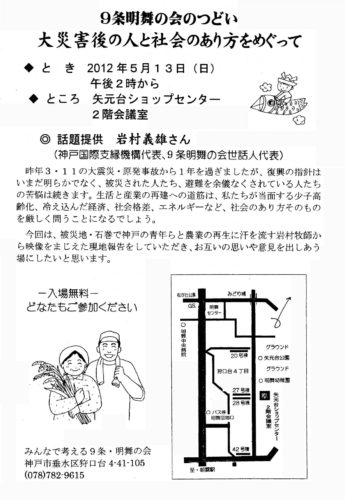

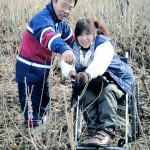
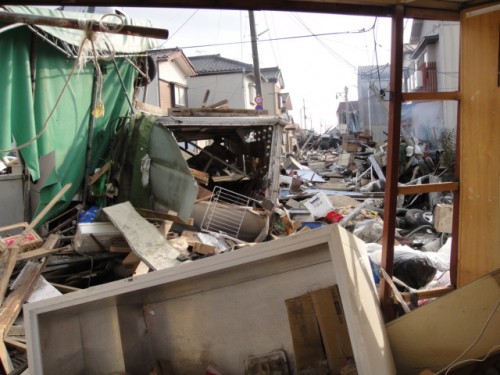
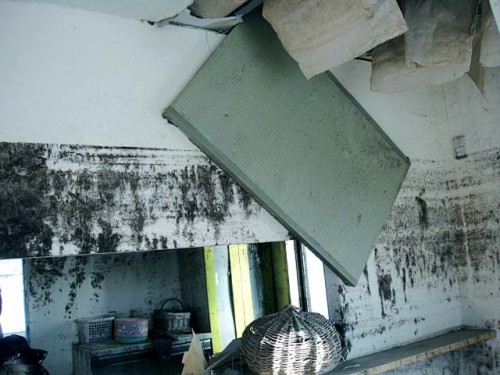
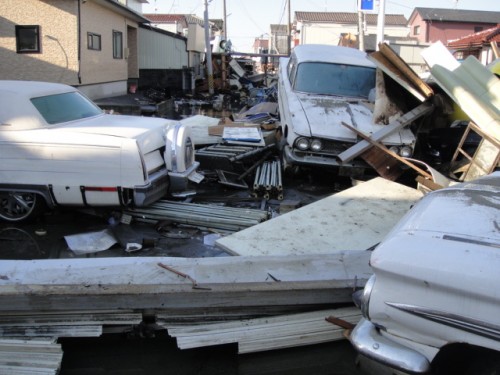

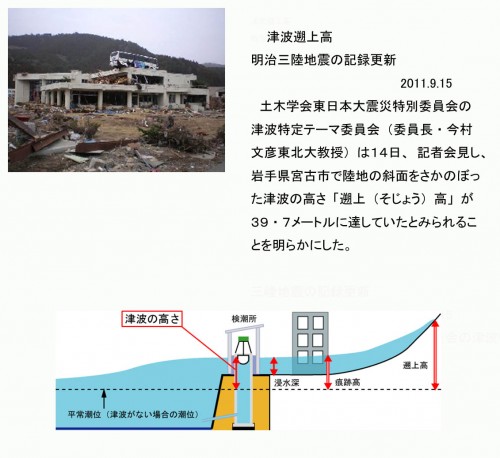
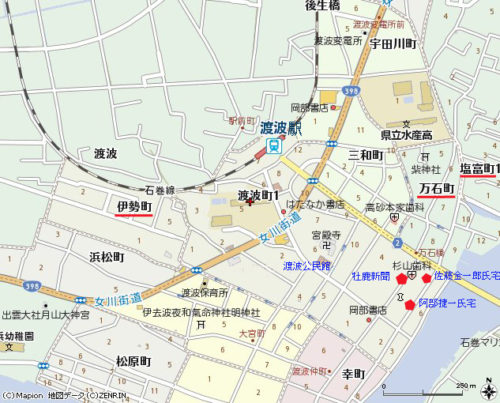
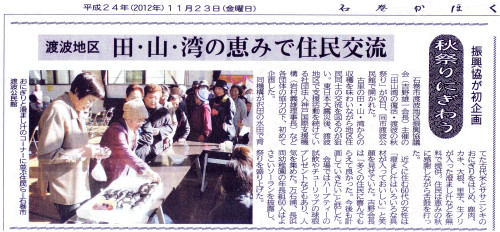
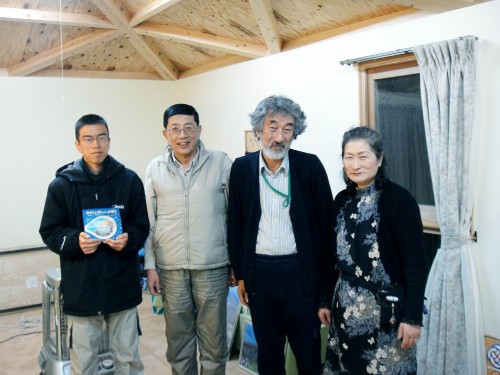
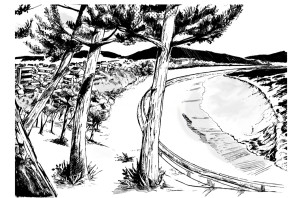
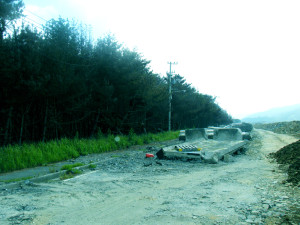
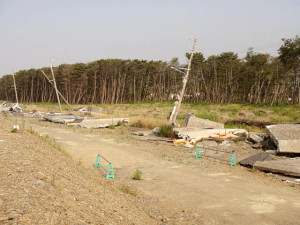


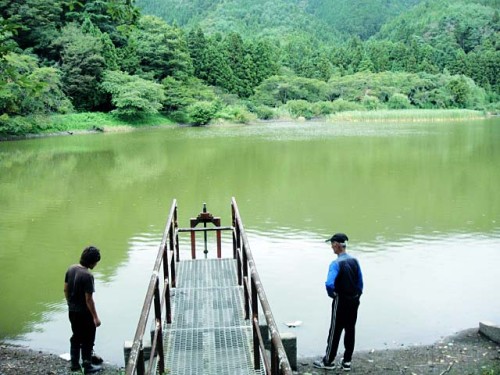
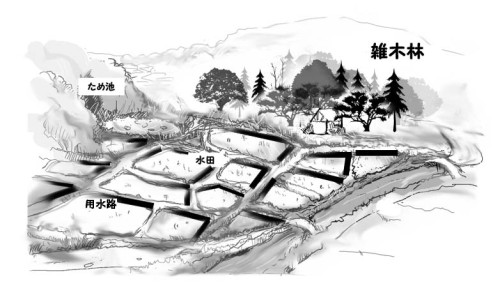
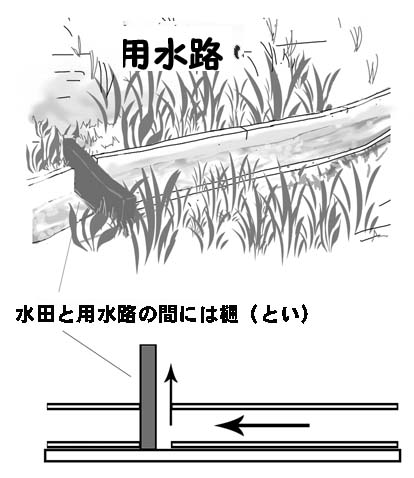

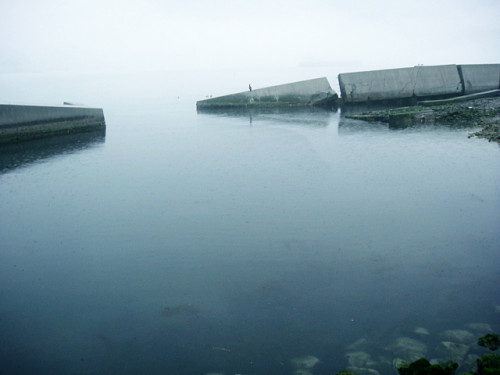
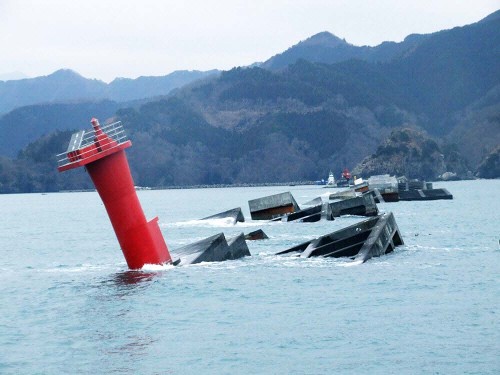
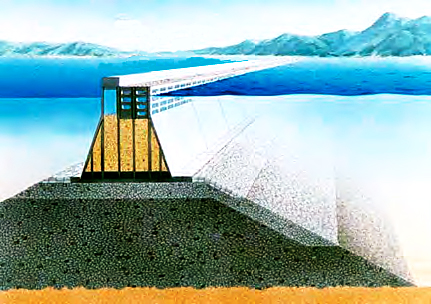
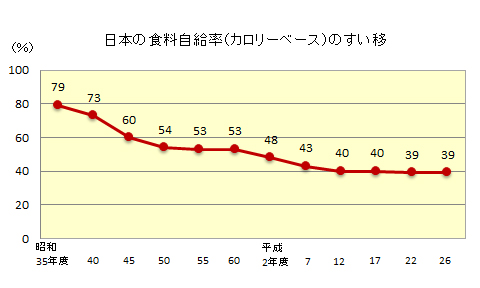
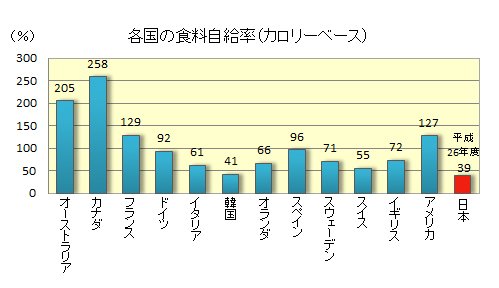
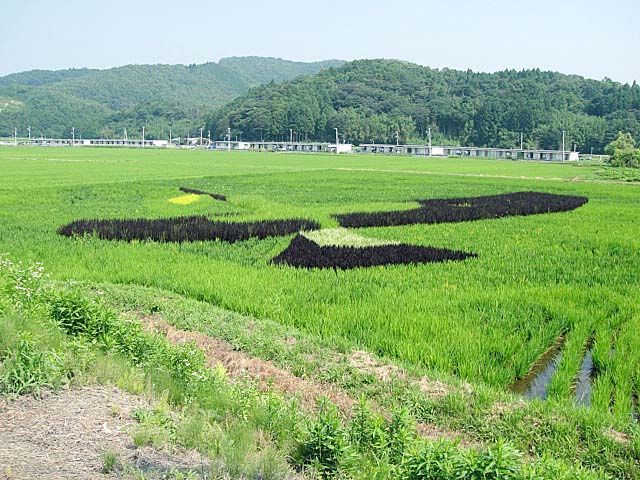
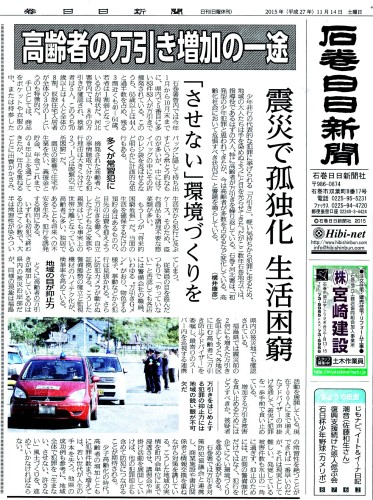
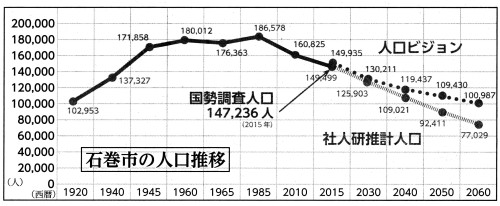
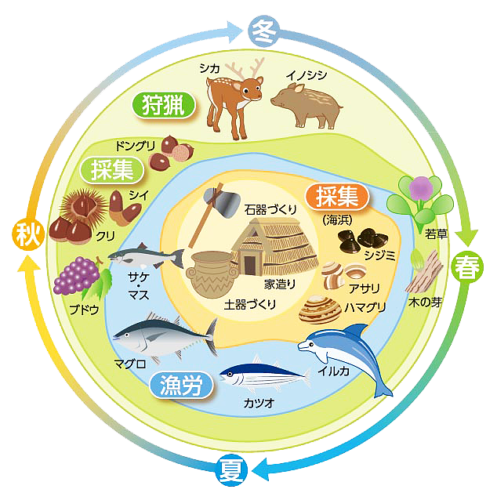
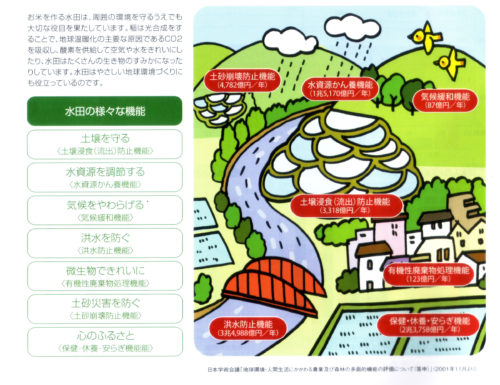
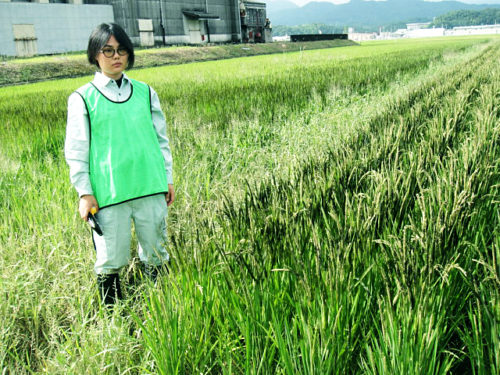


yandanxvurulmus.DVrHb0Qo6gbU
xyandanxvurulmus.XxRSMD0KU8fF
xbunedirloooo.qrNBQmJ1roBW
understeers xyandanxvurulmus.xaLNonhF8tx2
porno vurgunyedim.KTkFQ6I6RT2U
Hello There,
I trust this message finds you in good health and high spirits. My name is Alan Sotos, and I am employed as an auditor at a financial institution in Chicago.
I am reaching out to you regarding a highly significant business transaction that I oversee, one that holds substantial value amounting to millions of dollars.
This transaction is set to be conducted through lawful means and promises considerable benefits not only for involved parties but also for the broader society.
Should you express interest, I am prepared to provide comprehensive details about myself and the specifics of this business transaction. I am eager to engage in further dialogue upon receipt of your response.
For continued correspondence and to delve into the finer points of this matter, please contact me via my private email address at alan.sotos@executivesemail.online
Warm Regards,
Alan Sotos
Financial Auditor
escort siteleri 0qbxjluaxcxjsxzz.UVkZ0CVGLN47
4k porn free download gghkyogg.gnkVzcLpxCh
sexy hd porn.com ggjennifegg.u19oG0pYteH
pron full hd video ggjinnysflogg.3jWQA1IAQyy
fashionflag porn videos 4k download fashionflag.Bdqkloy3qcI
goodhere Cuckold porn vurucutewet.avGfzE6OLE5
ladyandtherose Mature (40 ) porn backlinkseox.W9ZLlHiLGVI
jenniferroy 手コキポルノ japanesexxporns.4I8JtC2SHwJ
landuse Funny Porn lancdcuse.tM5hGg8AC0Z
falbobrospizzamadison Amateur porn jkkıjxxx.gOJuhAwGoRy
लड़की हस्तमैथुन अश्लील qqyyooppxx.ygSkWriyIMd
विंटेज पोर्न के बा hjkvbasdfzxzz.HCrL5GqvRrd
बालों वाली अश्लीलता txechdyzxca.6BHcM5ZRcdD
यादृच्छिक अश्लीलता hkyonet.eXITu65Rn07
ਮਜ਼ਾਕੀਆ ਪੋਰਨੋਗ੍ਰਾਫੀ madisonivysex.1rASGKL1moK
ladesbet ਗਰਭਵਤੀ ਪੋਰਨ ladesinemi.Pm2U8DMeGYl
ladesbet 熟女 (40 ) ポルノ ladestinemi.ZDwtBQsRZI2
Wow, wonderful weblog structure! How long have you ever been blogging
for? you make running a blog glance easy. The entire look of
your website is fantastic, let alone the content material!
You can see similar here sklep